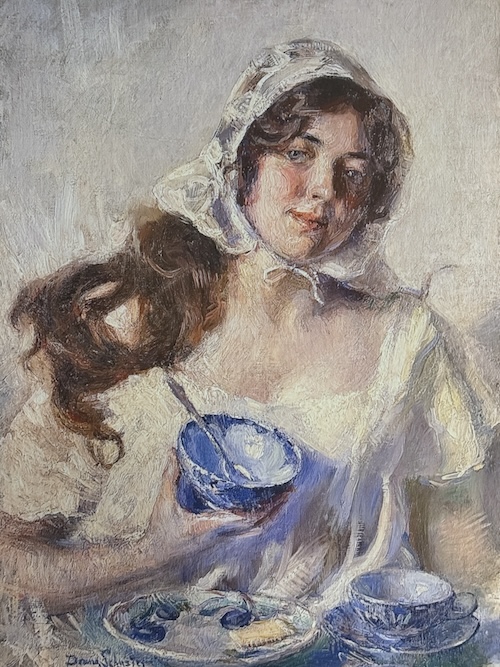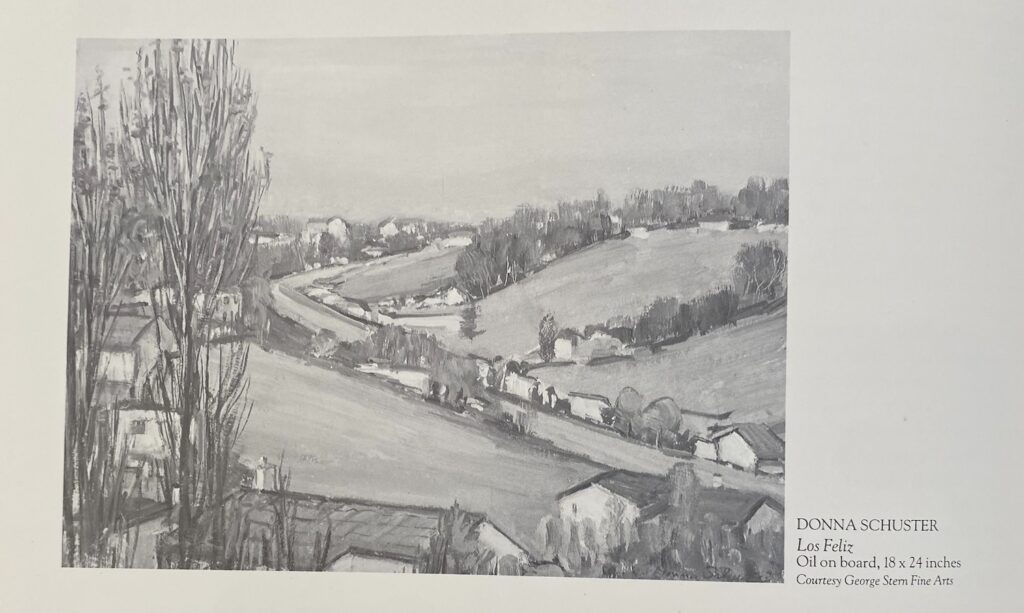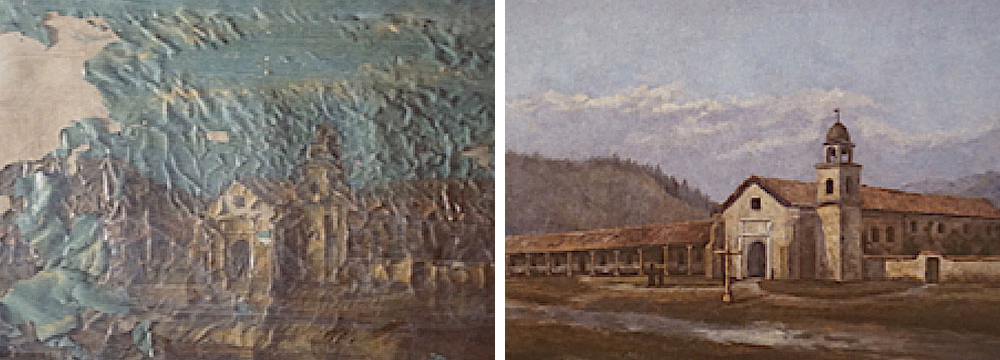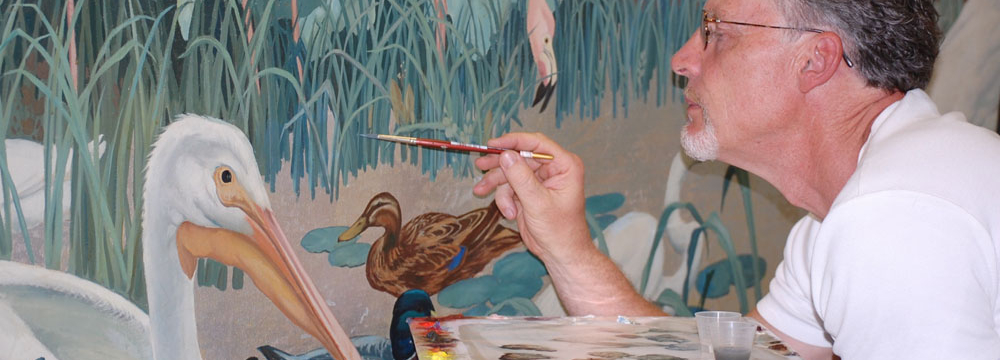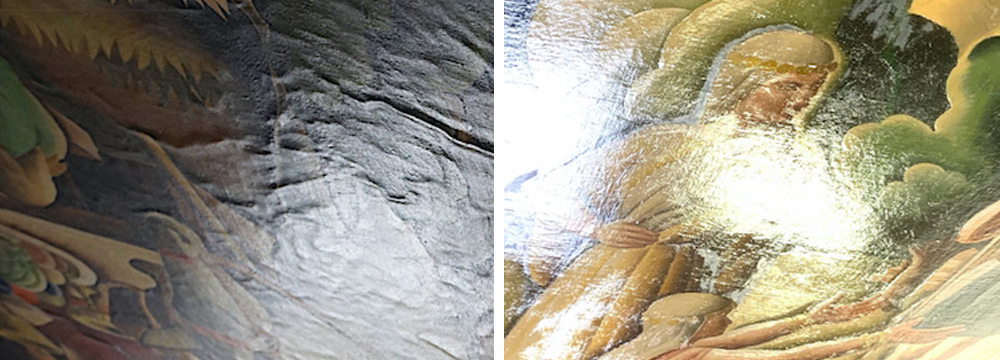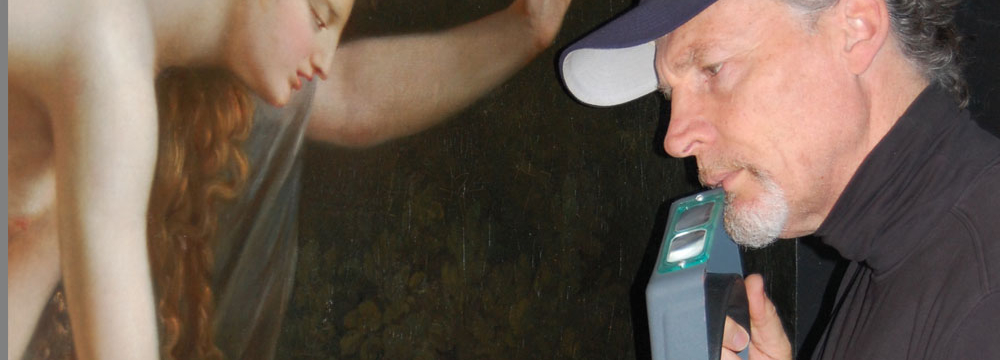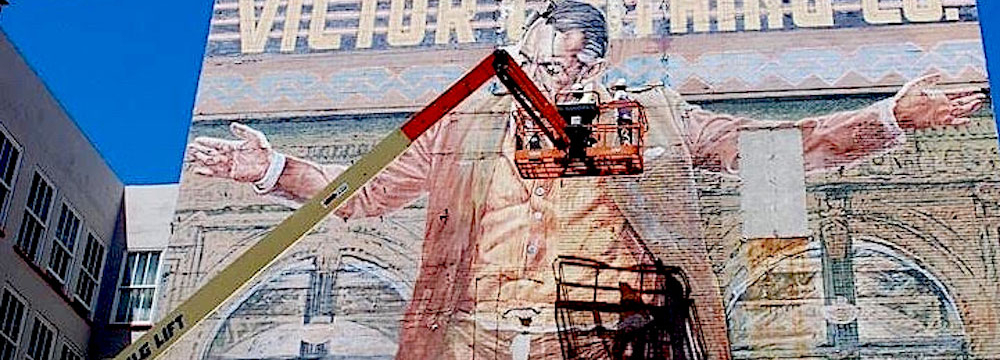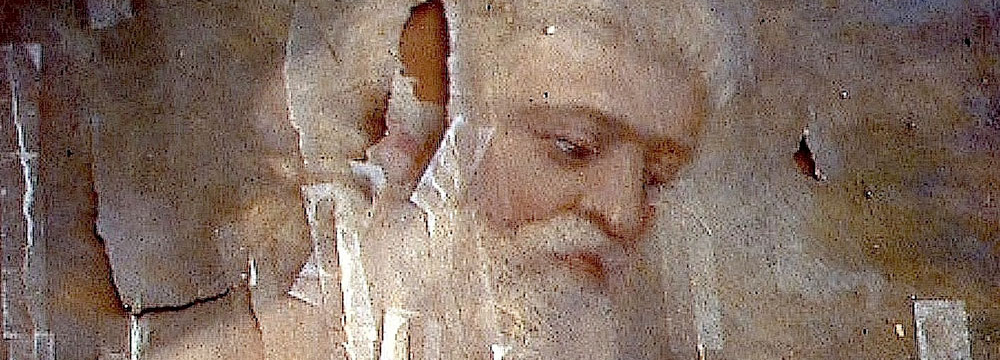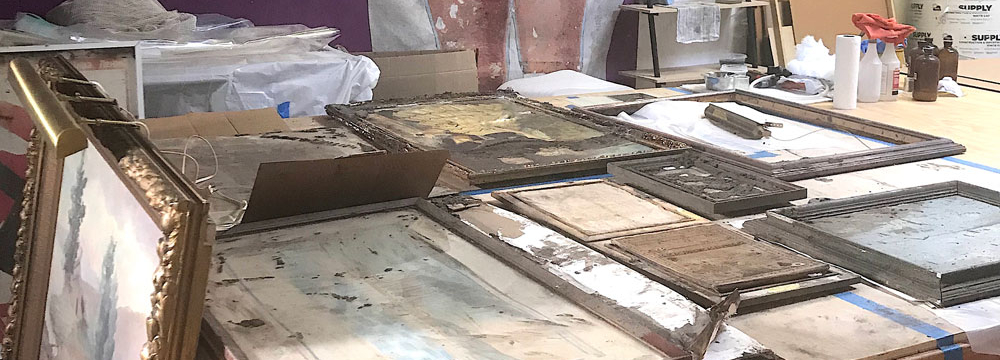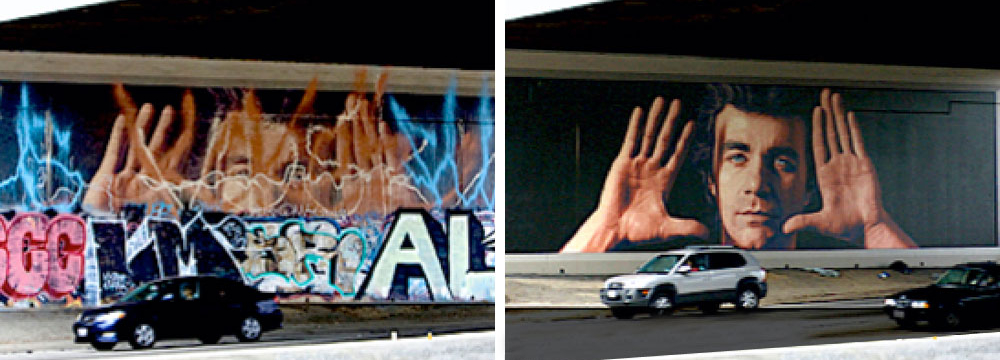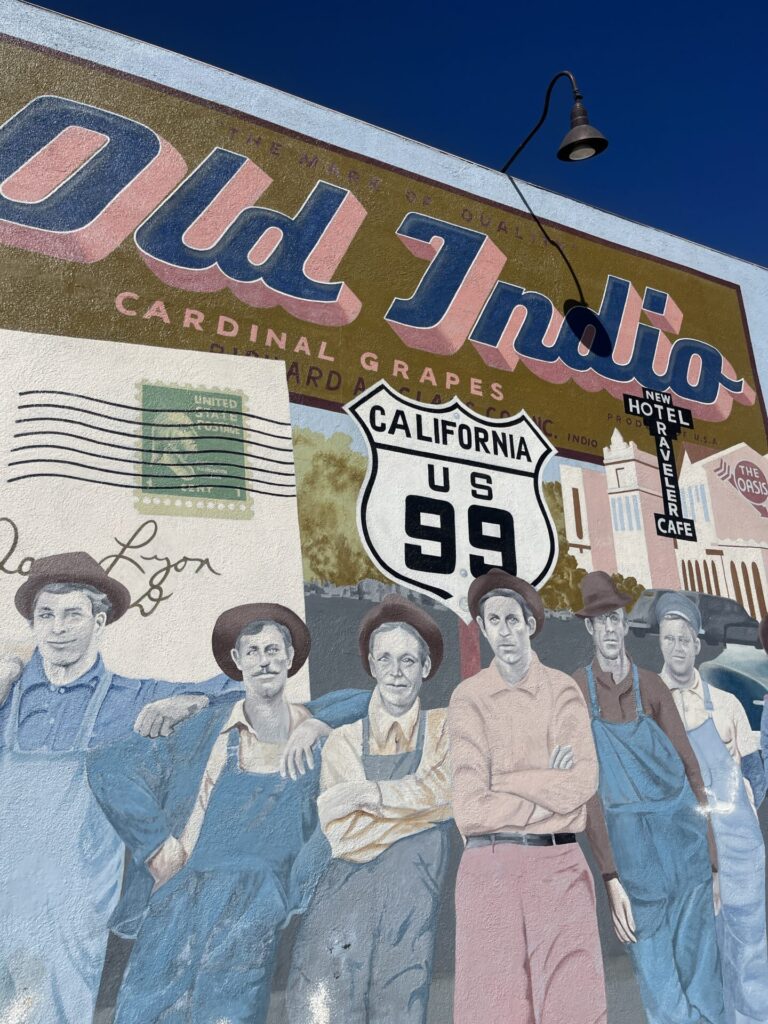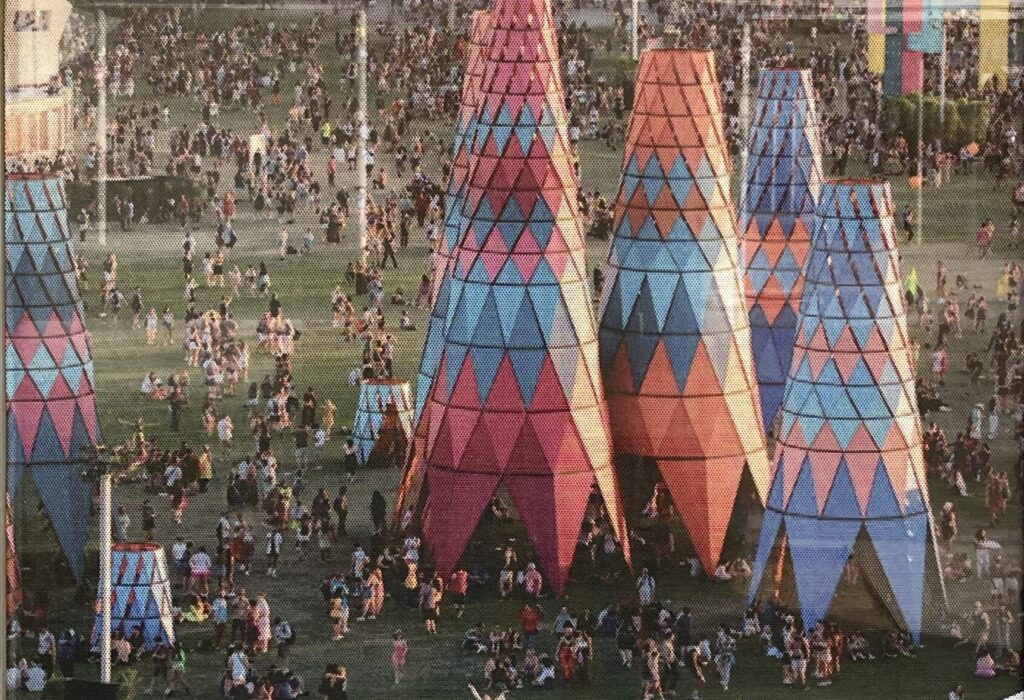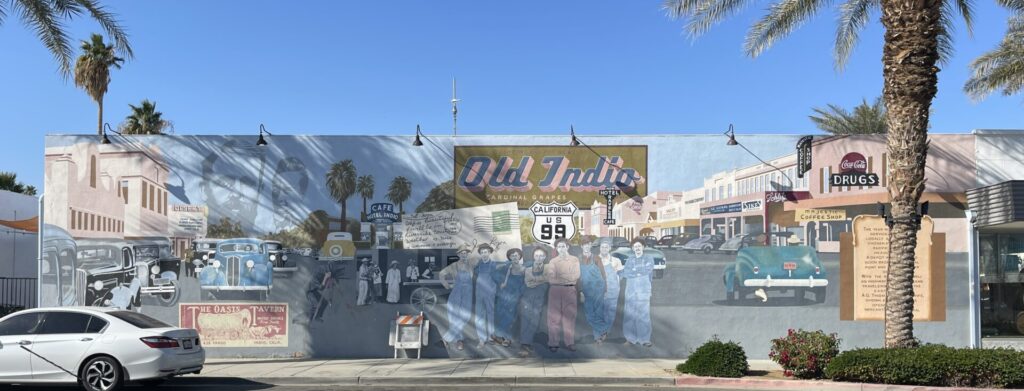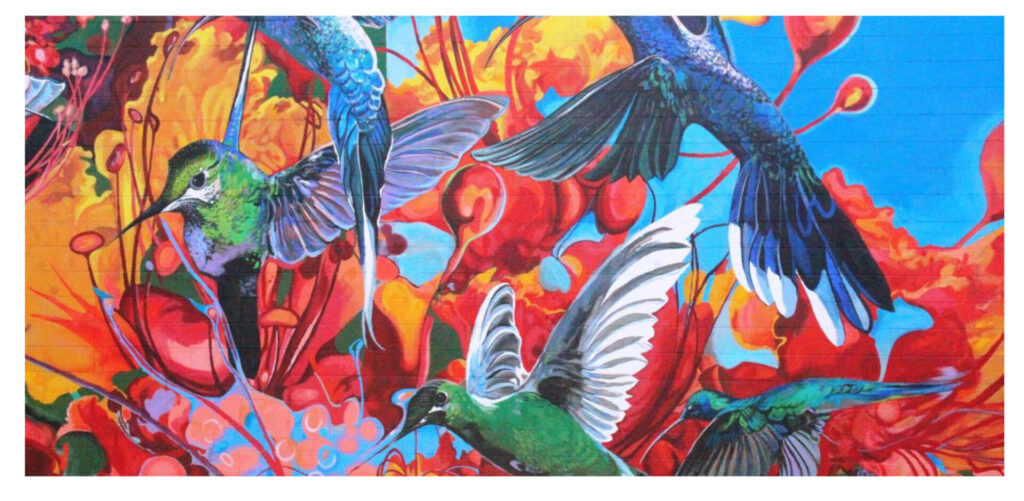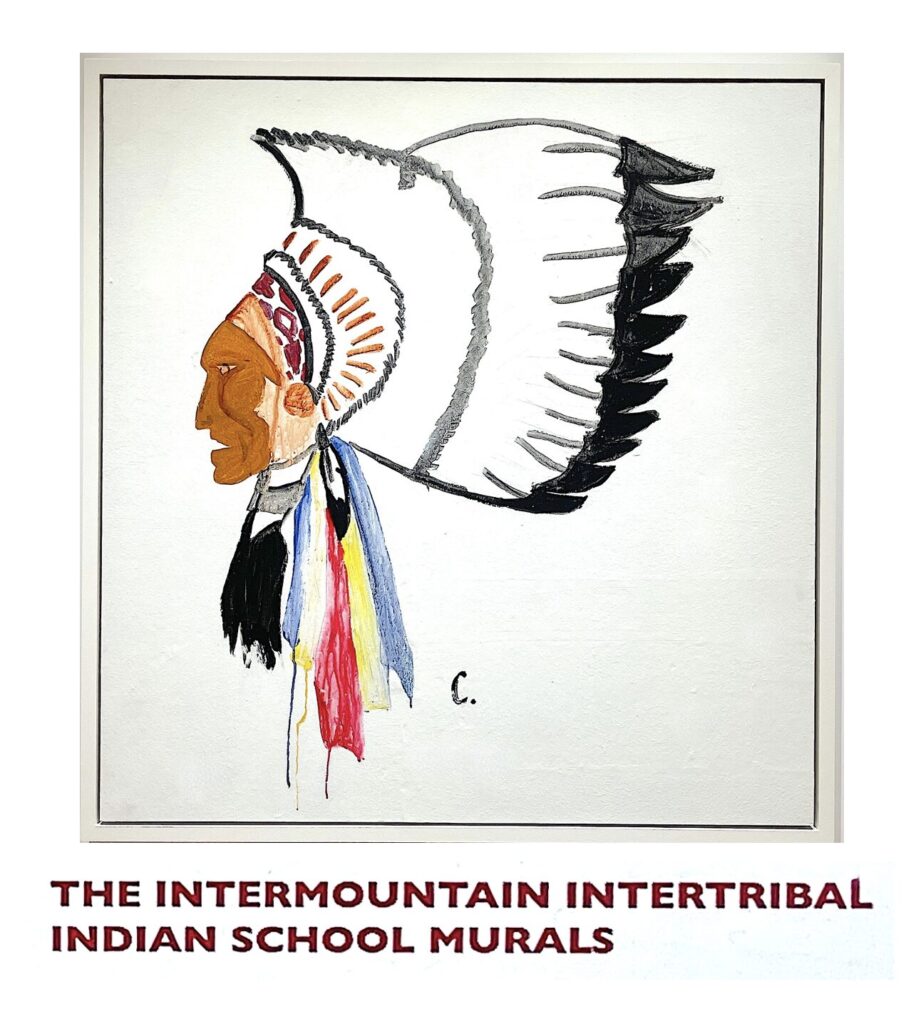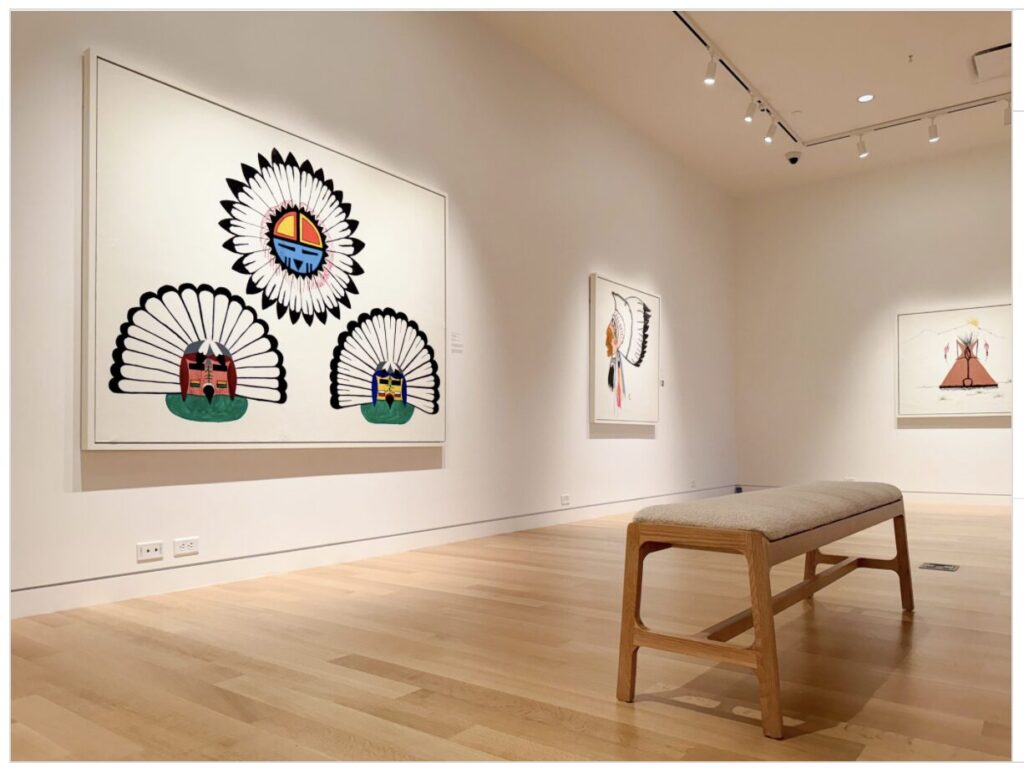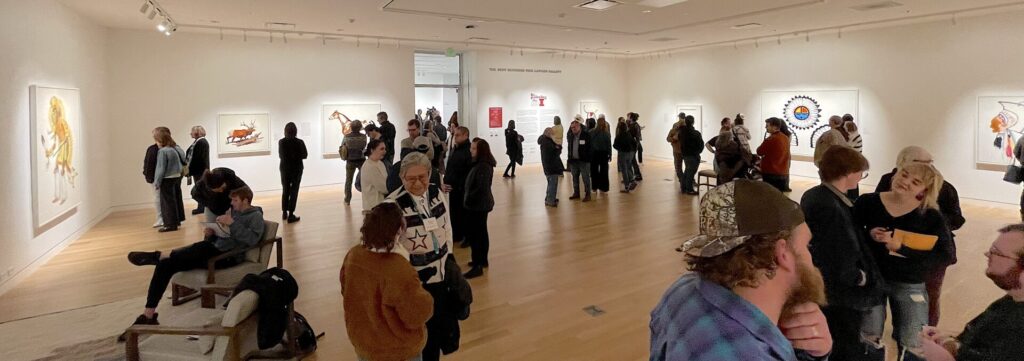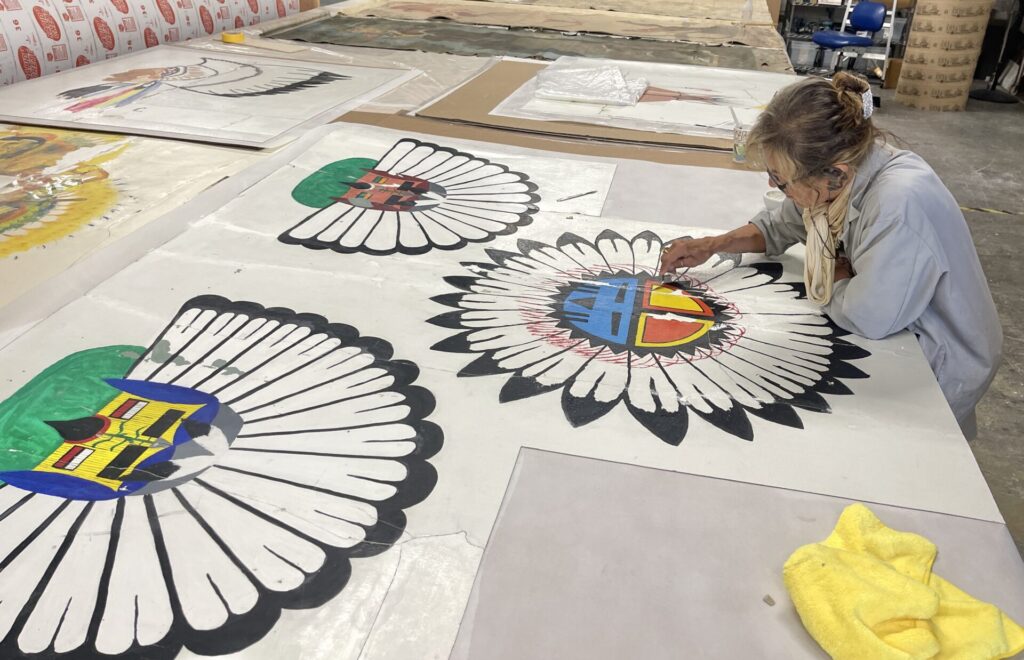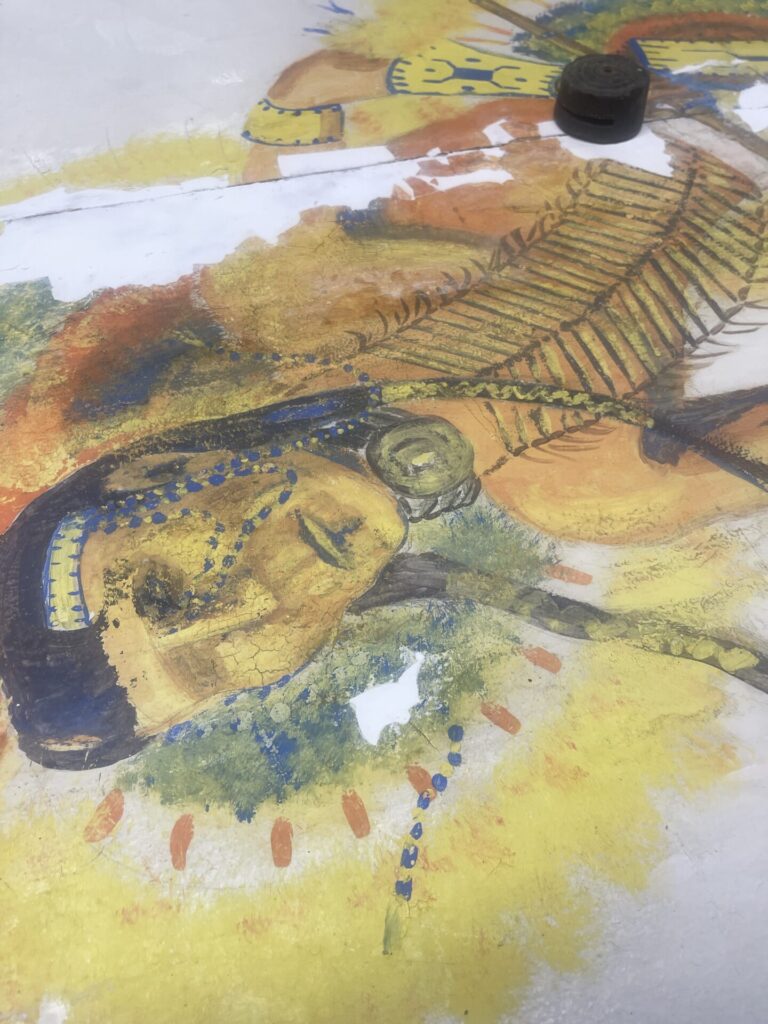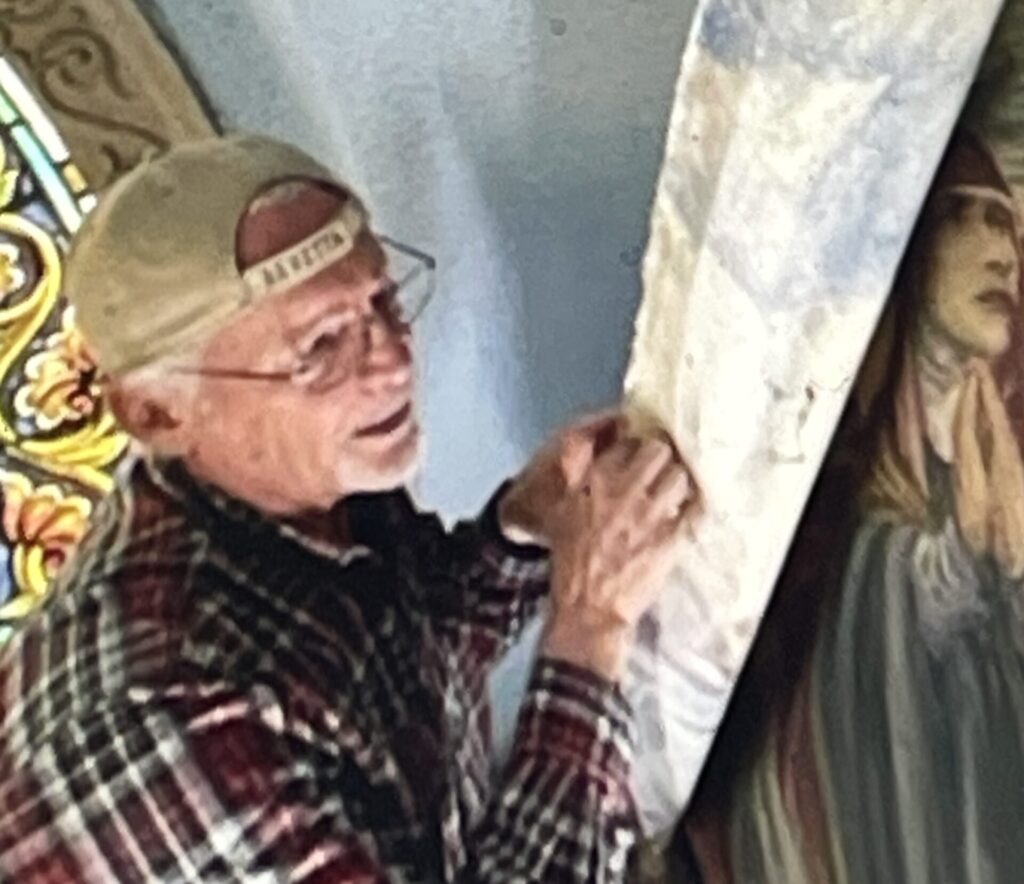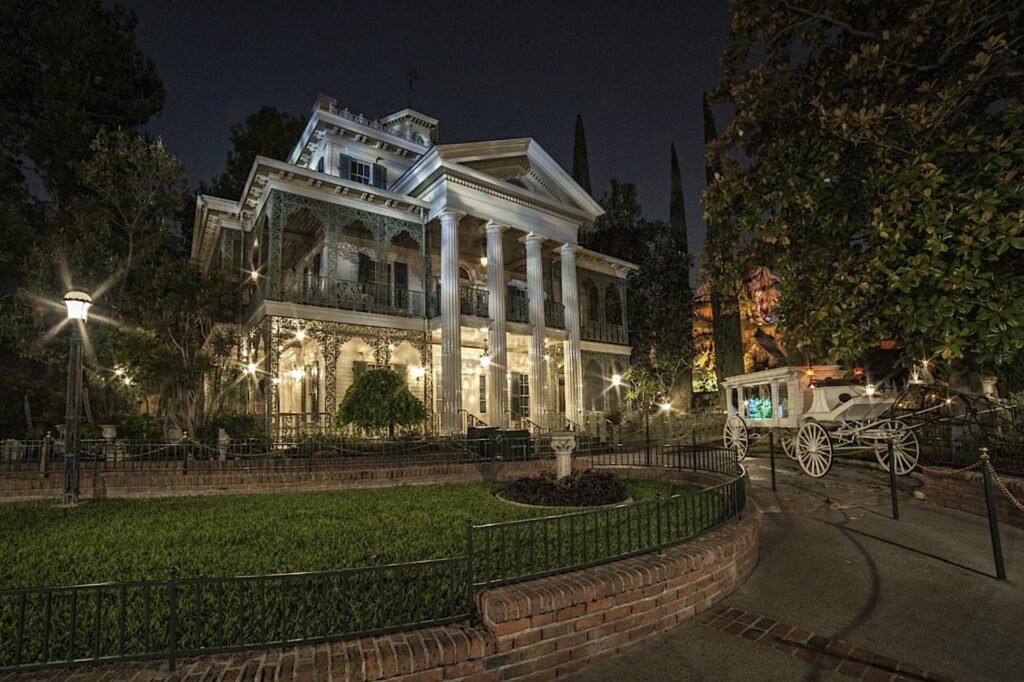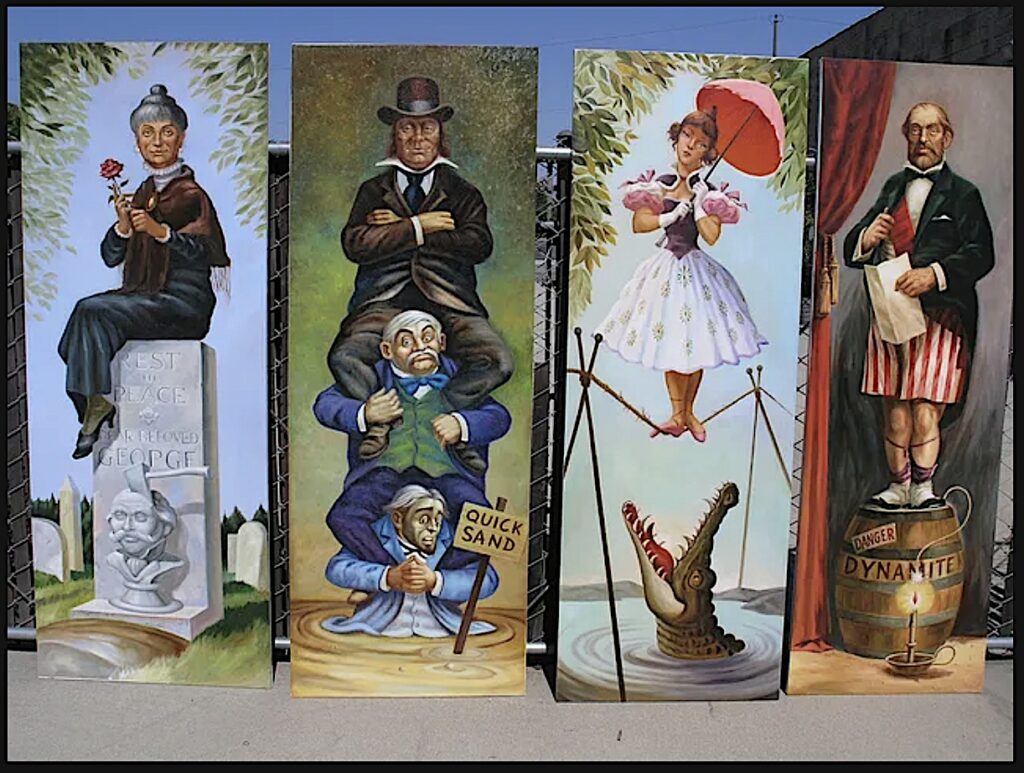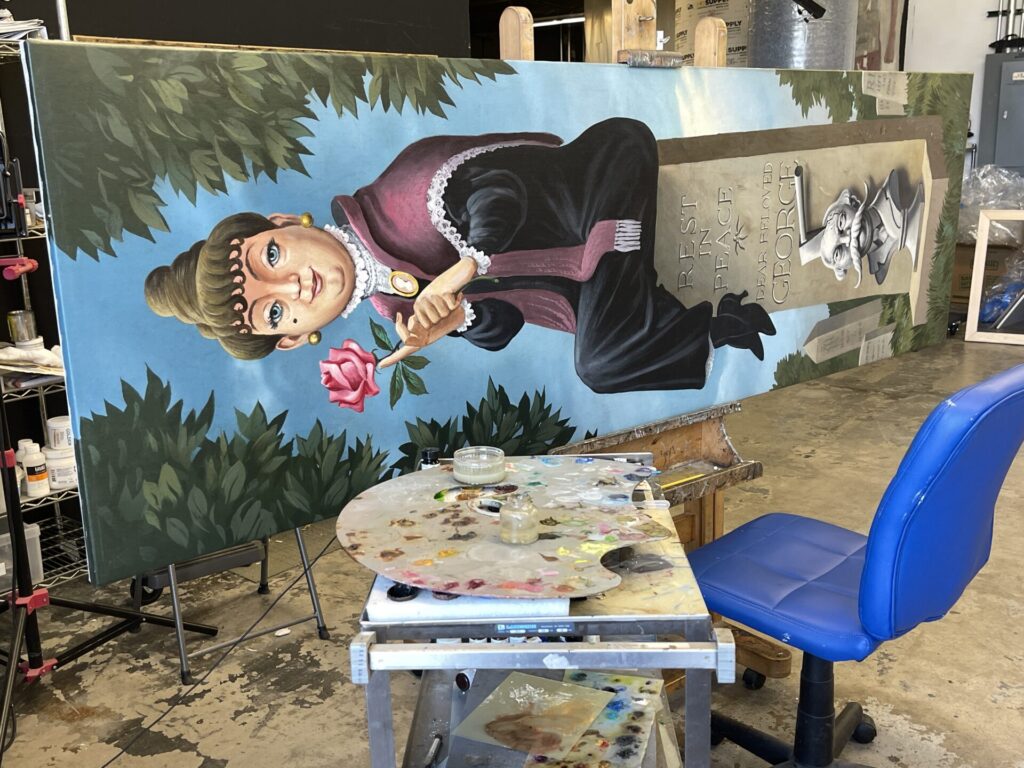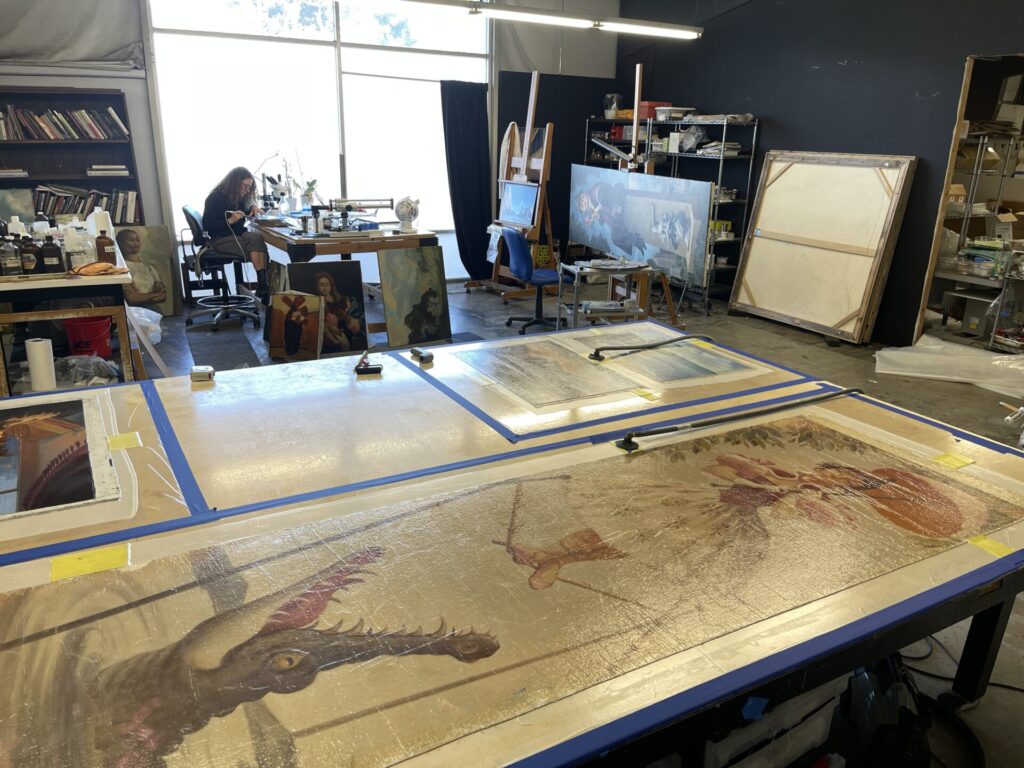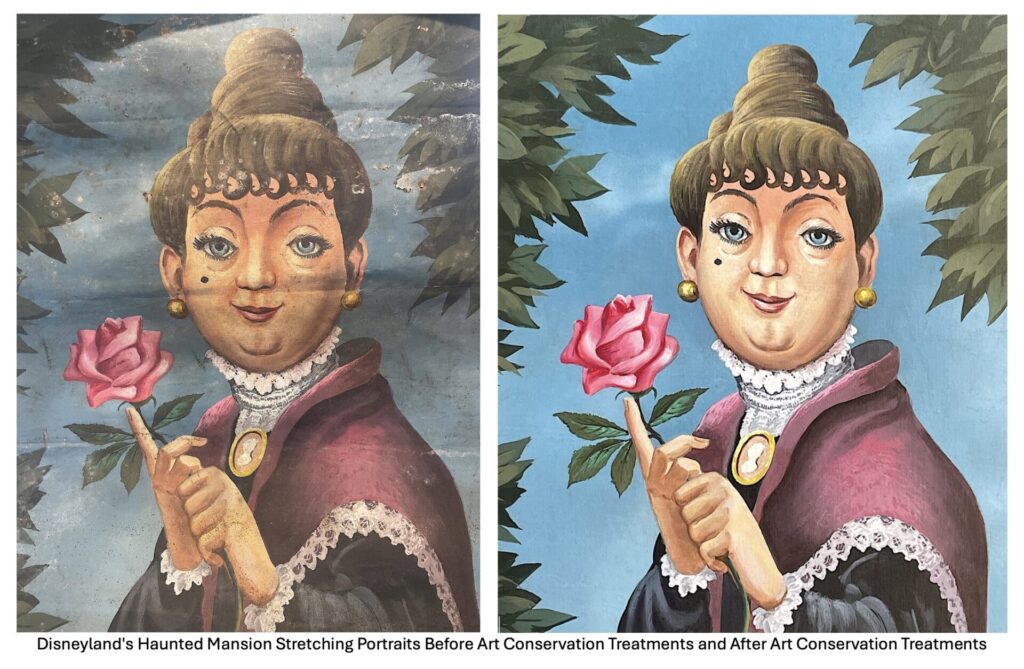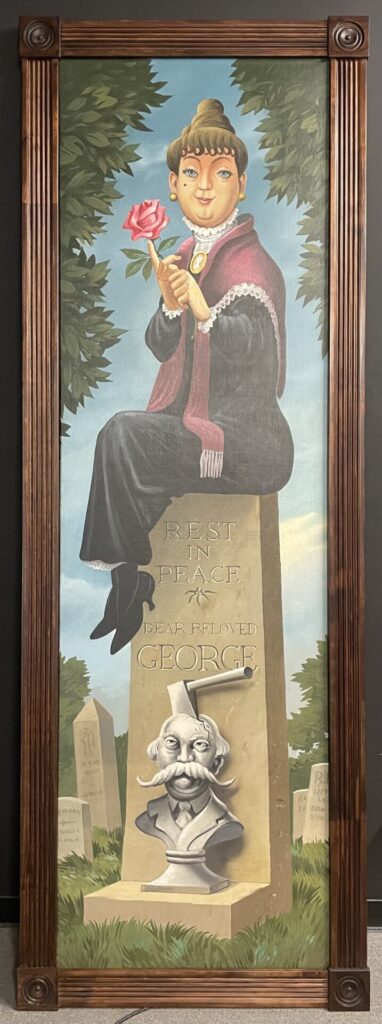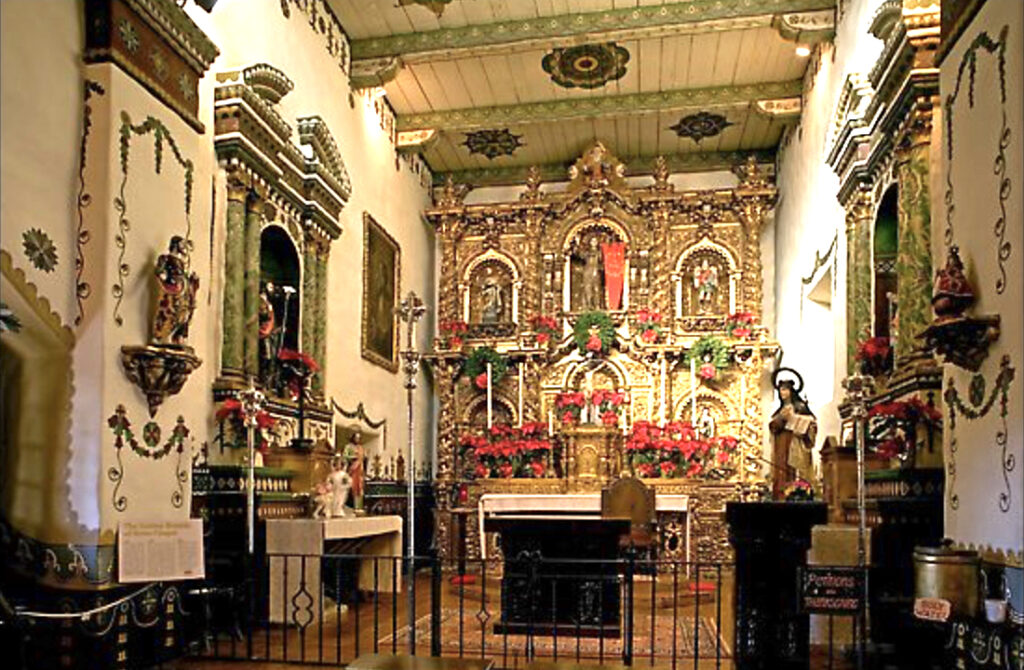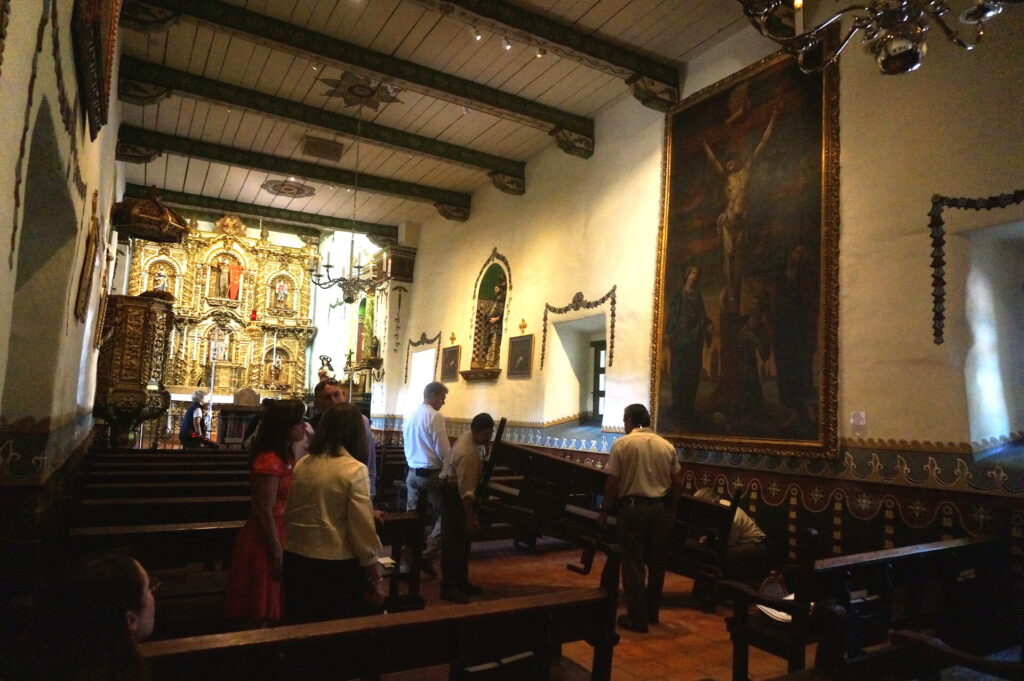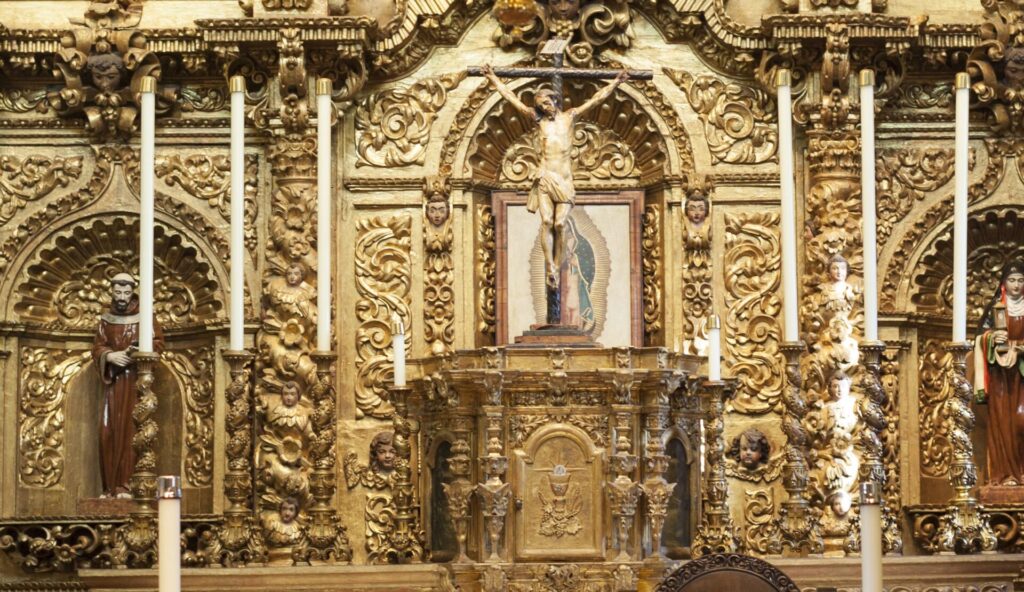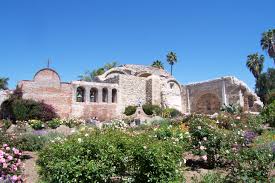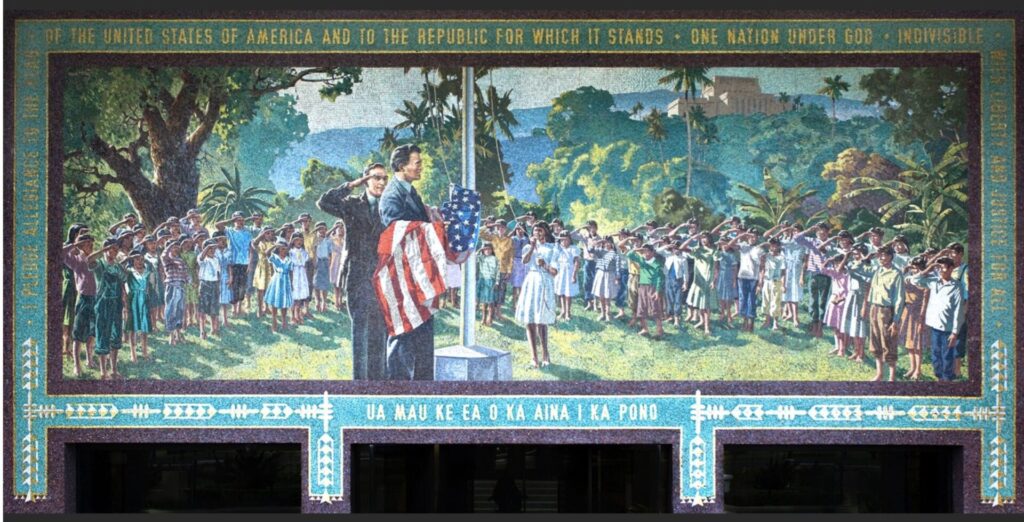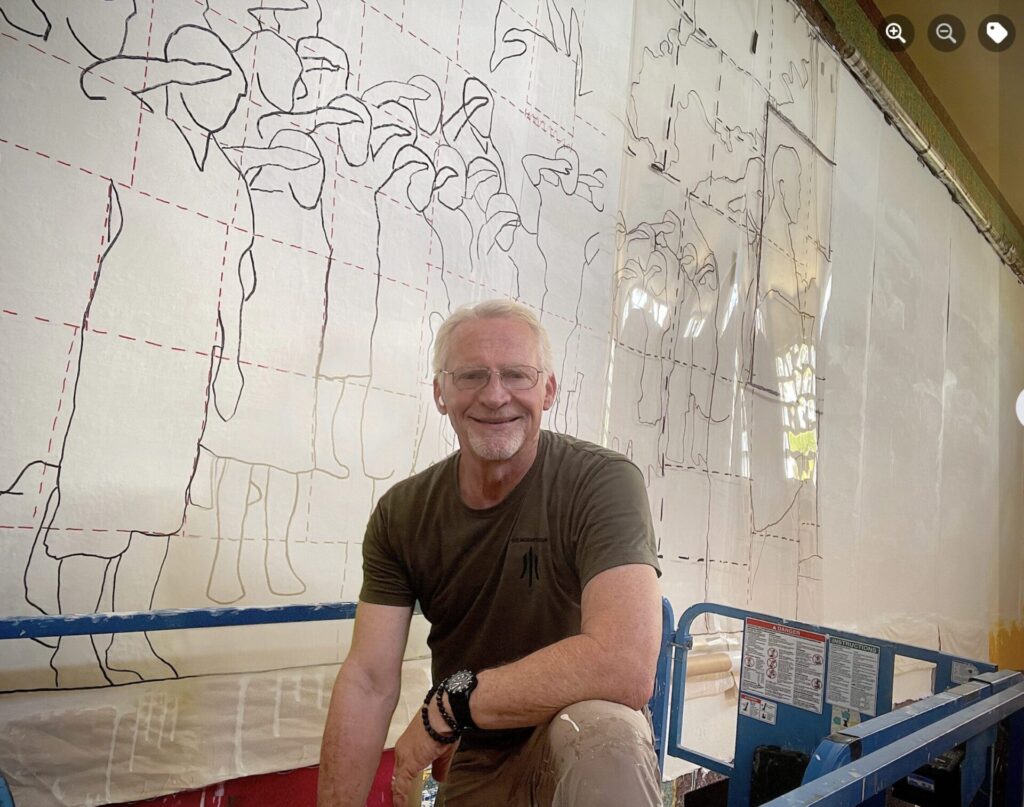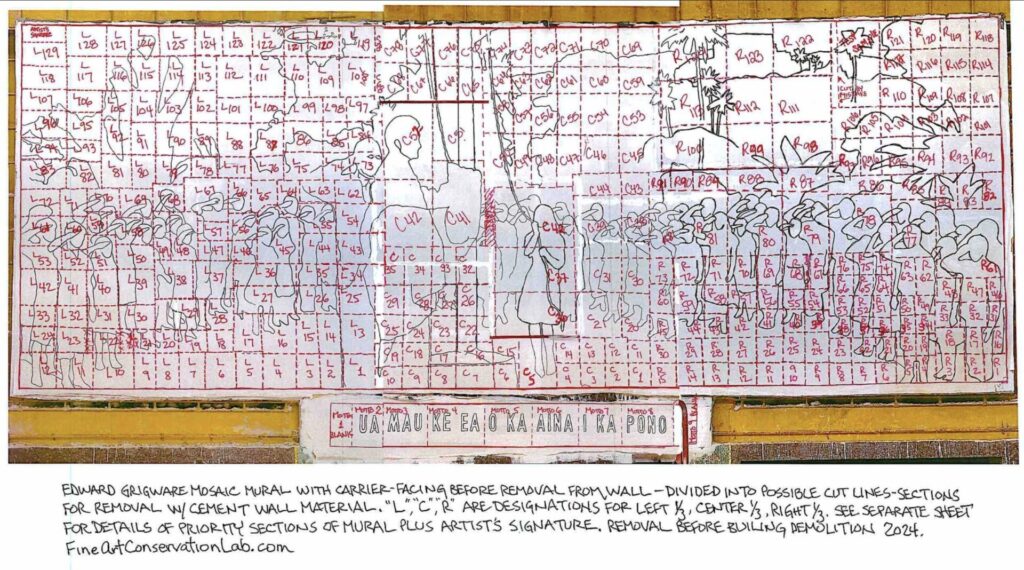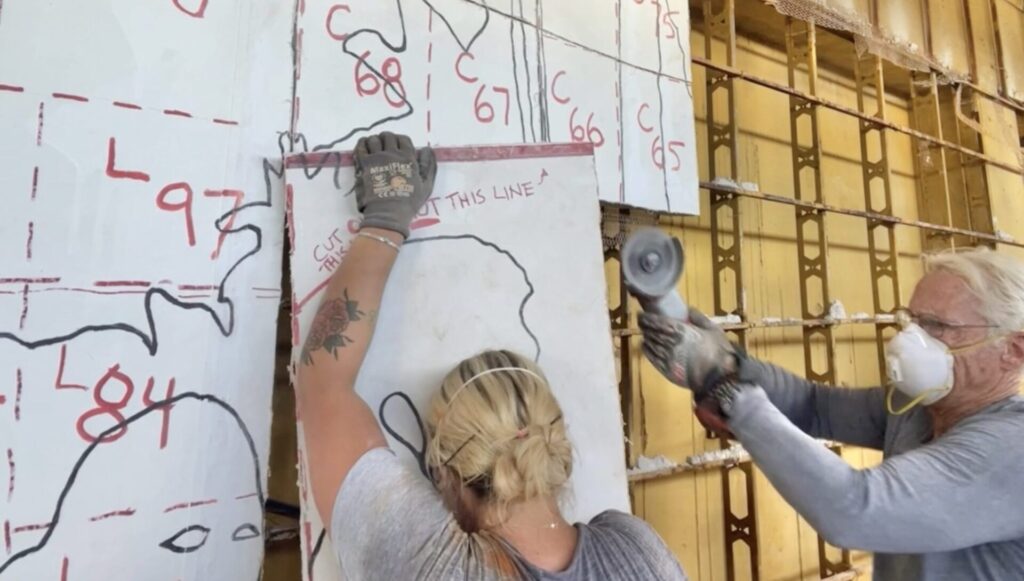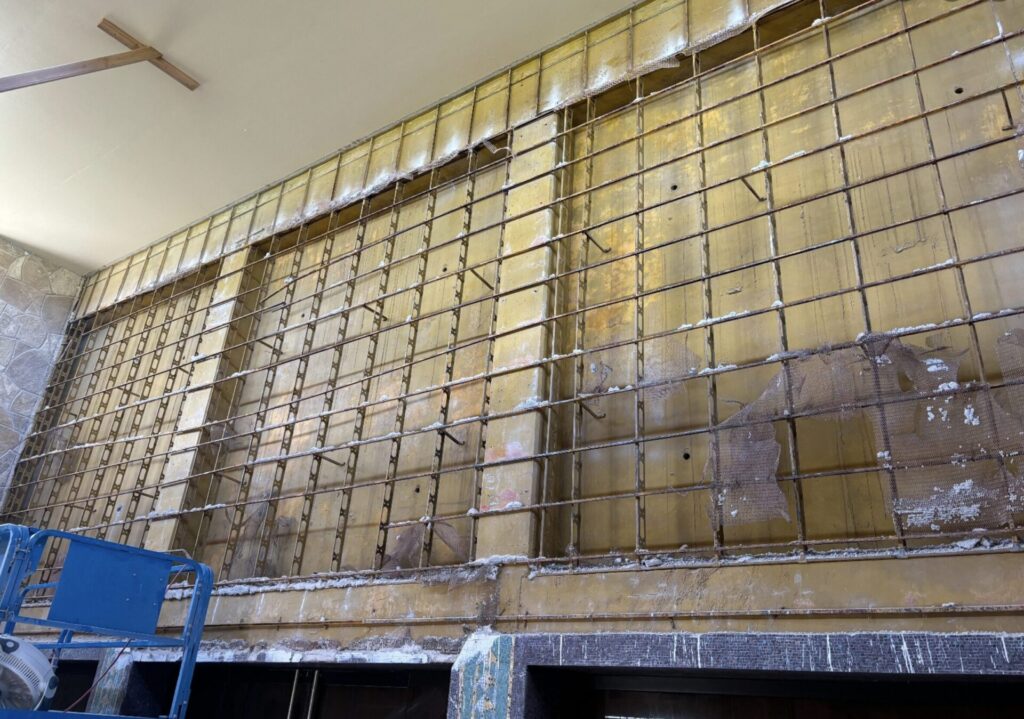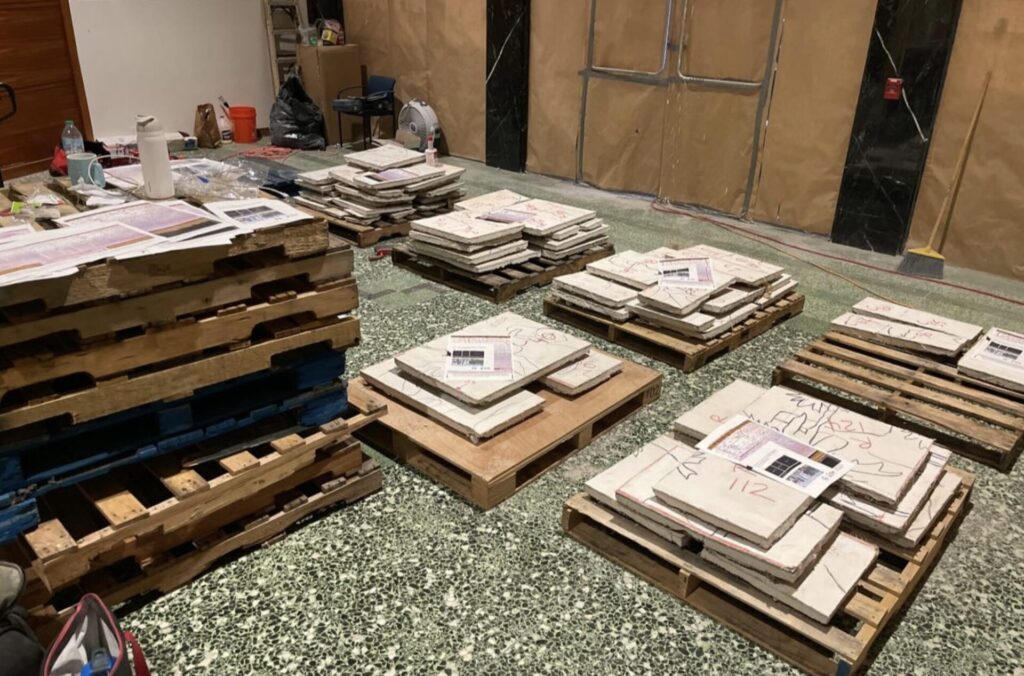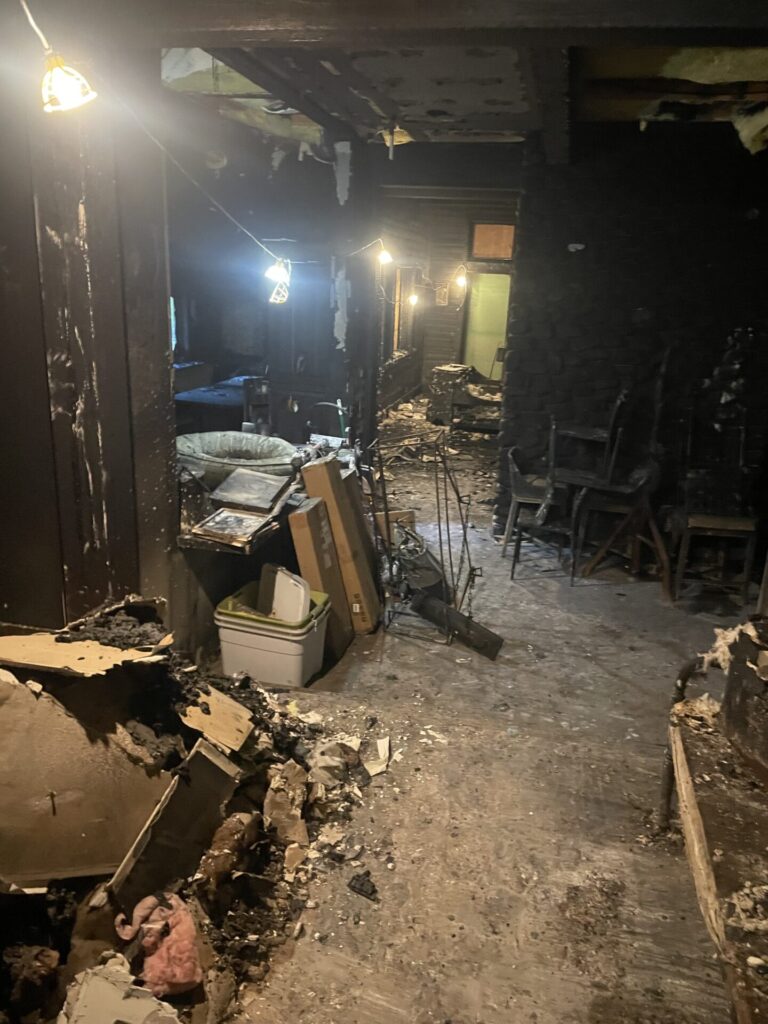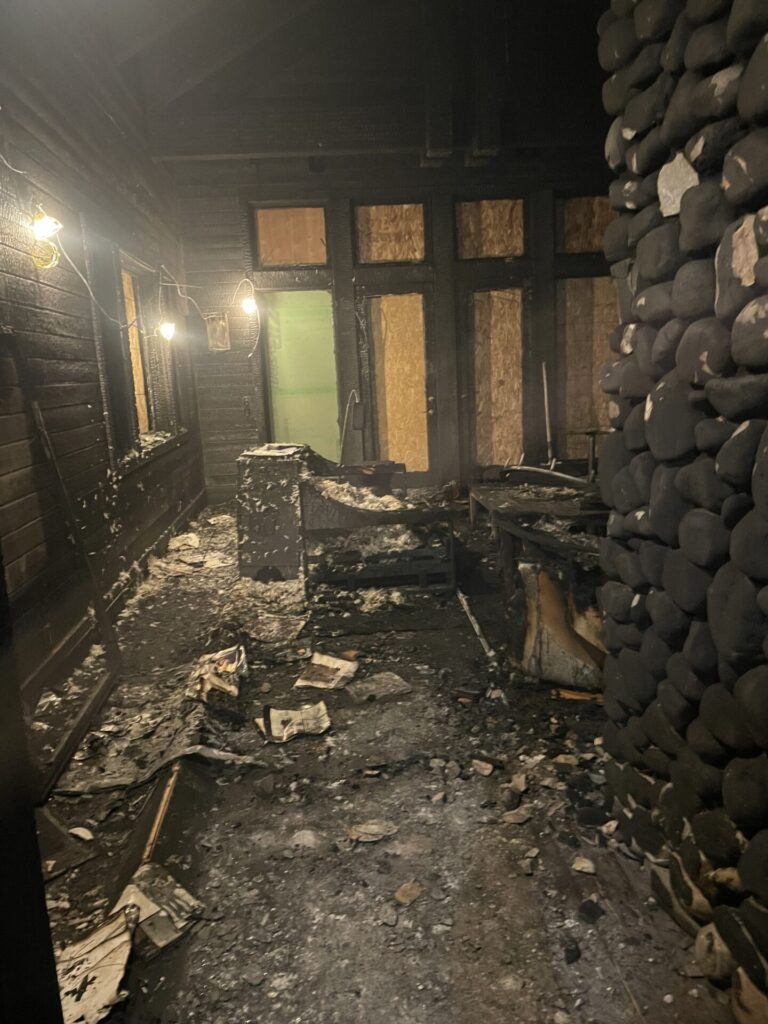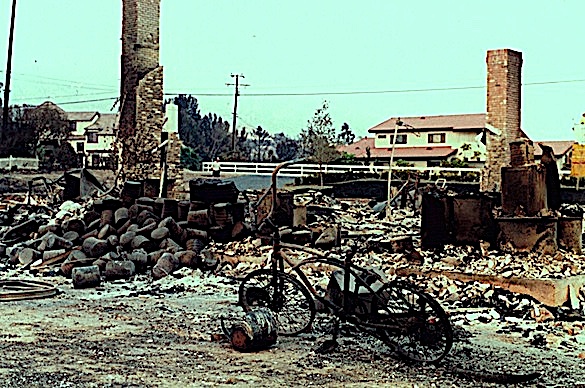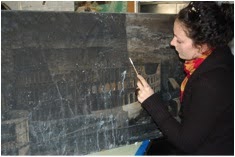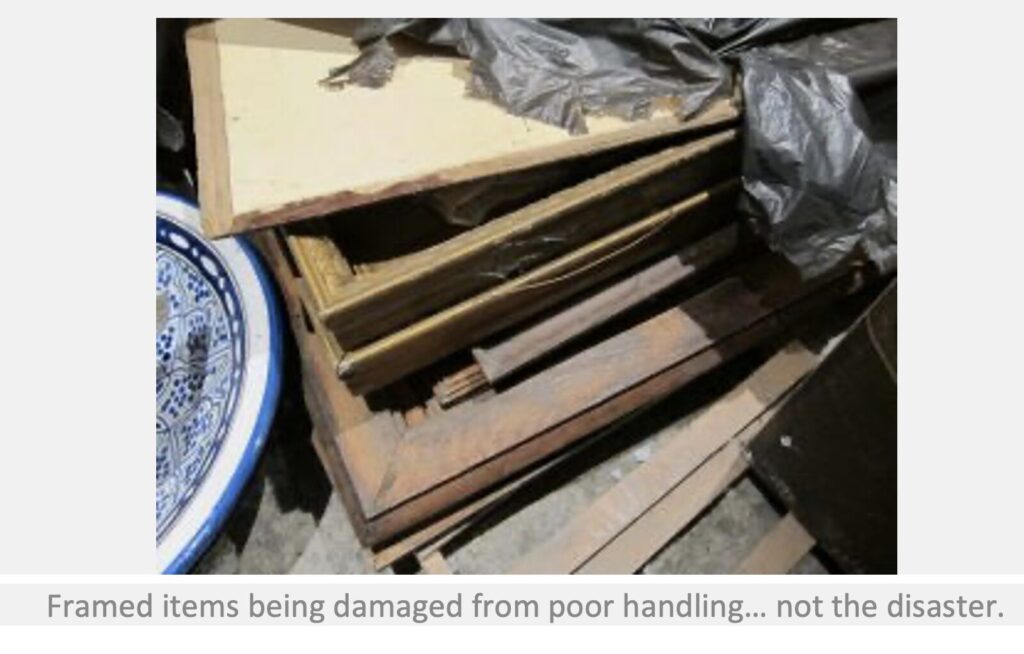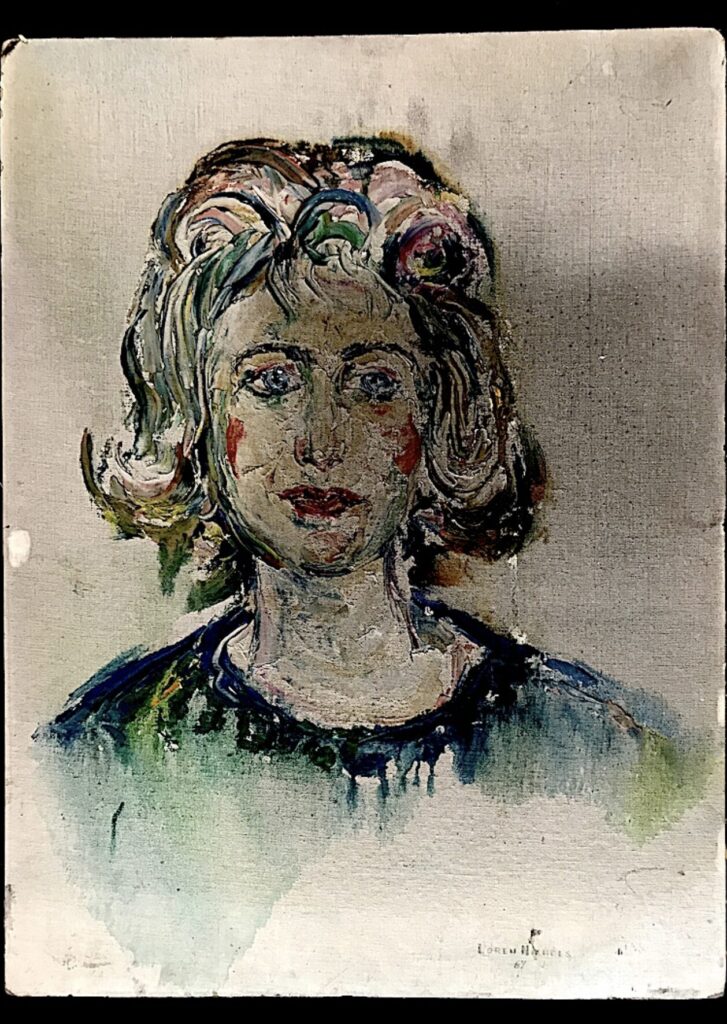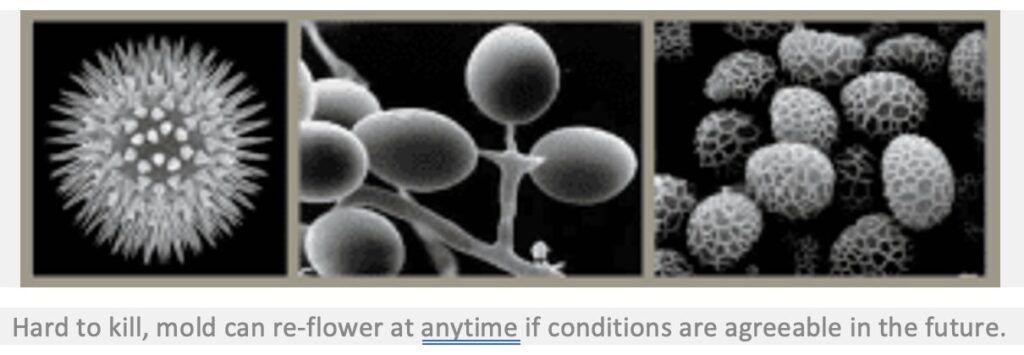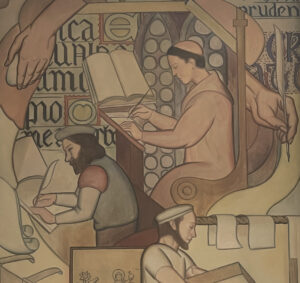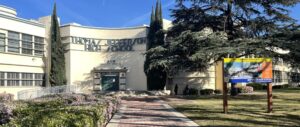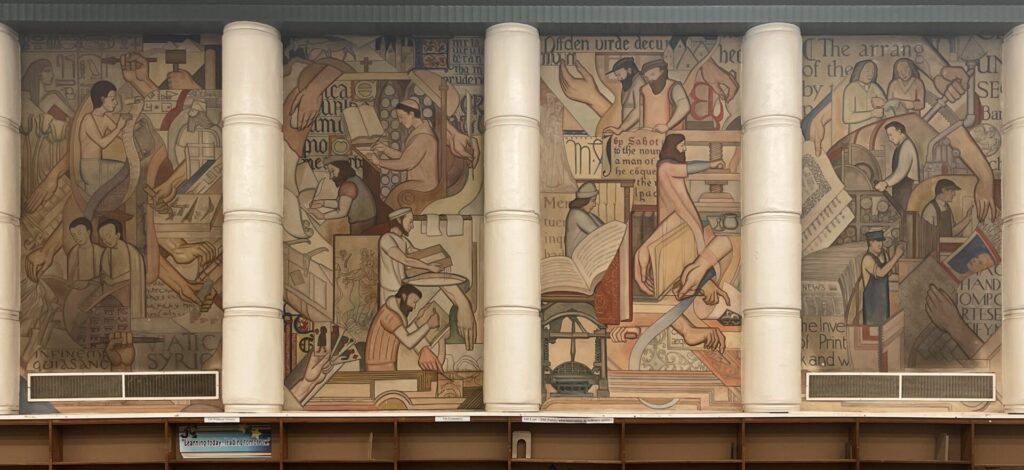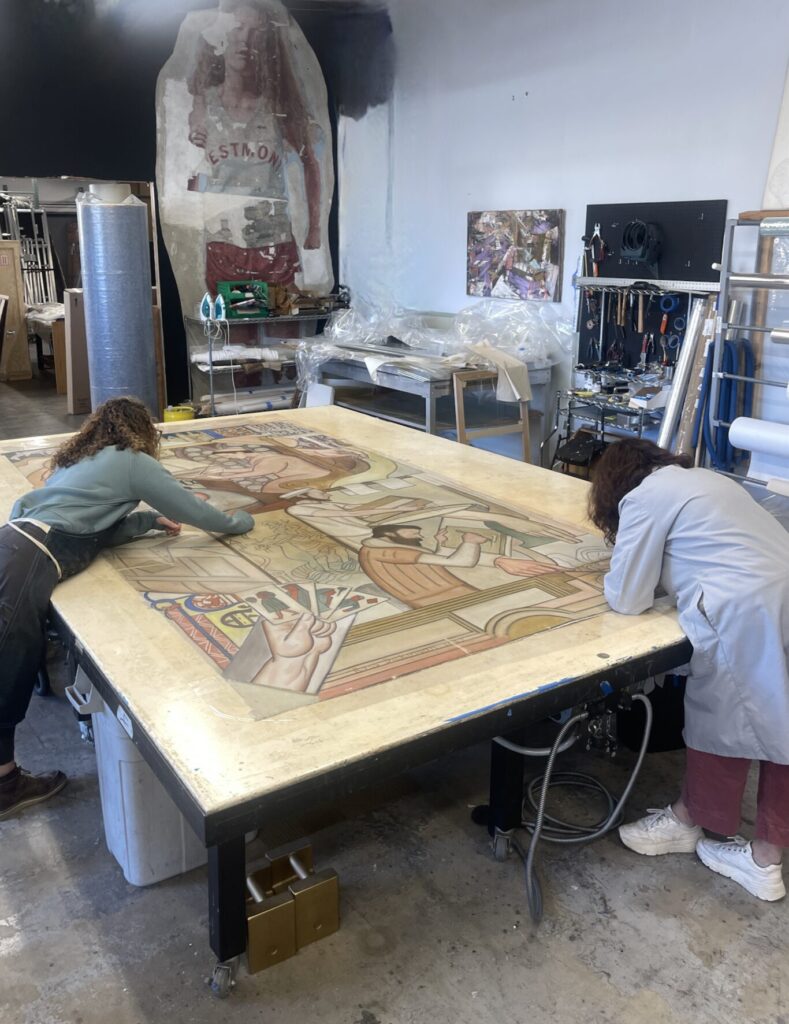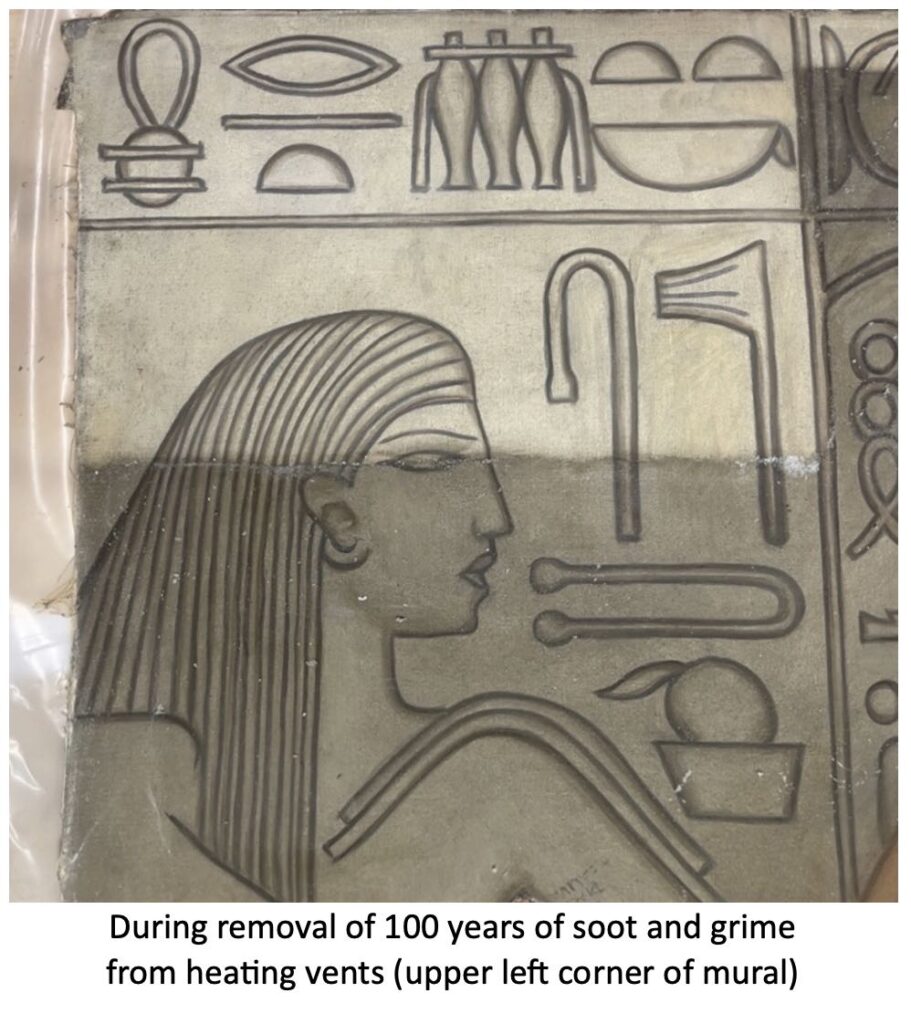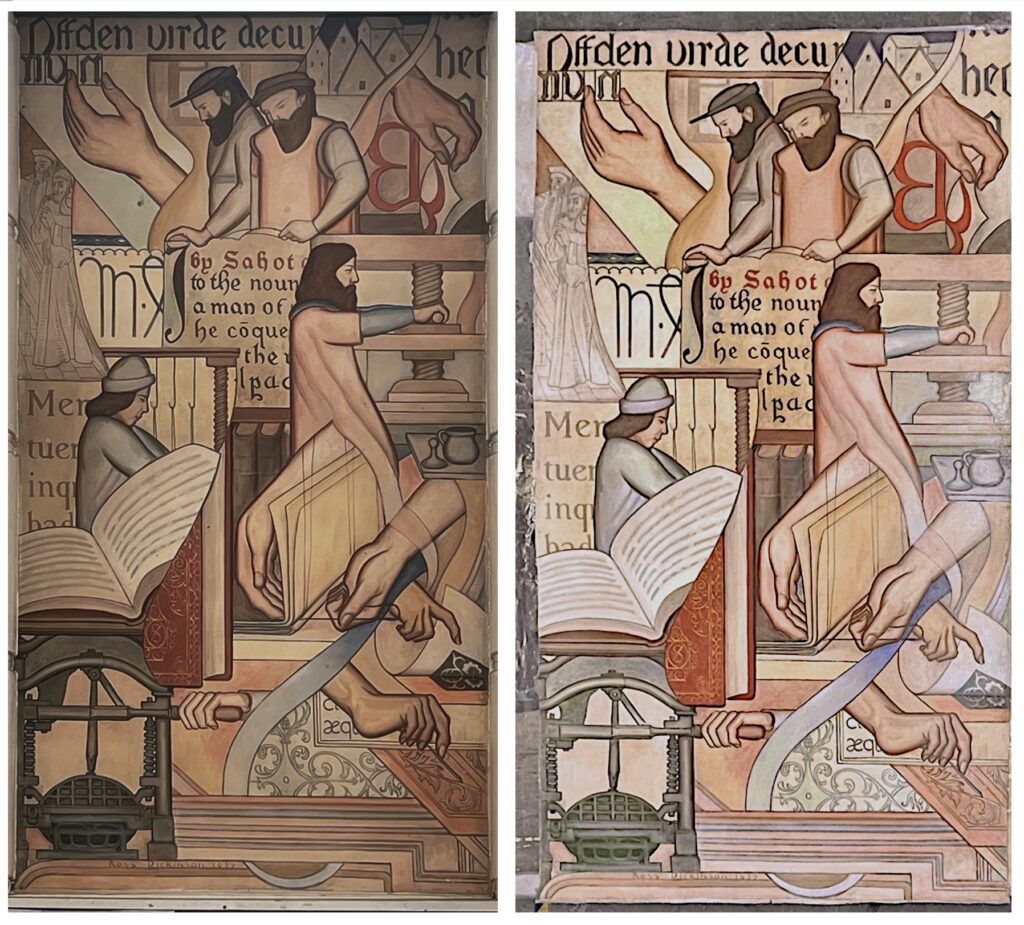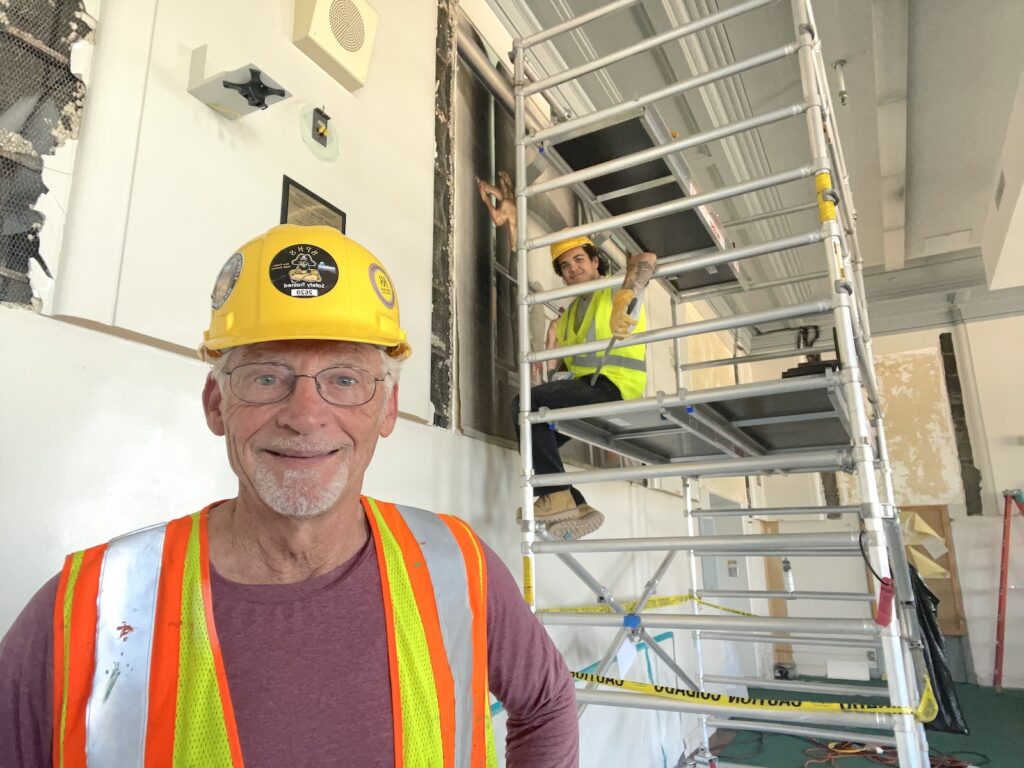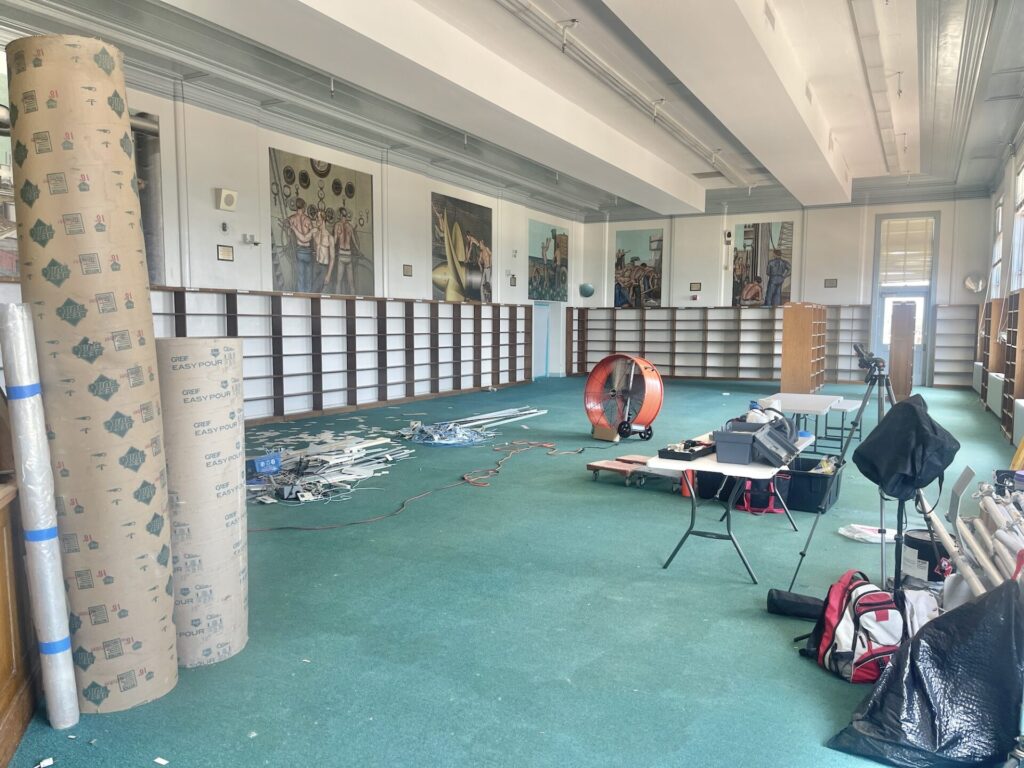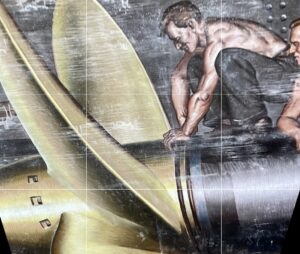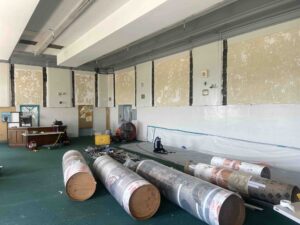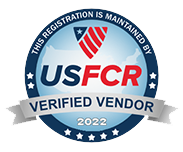What is so important about heirlooms? Why even bother? Be sure you know the answer before you talk to your insurance claims adjuster.
This authoritative article helps you (or someone you may know) to ask better questions and be more aware as you respond to your insurance company about fire, water and smoke damage. Call me on my mobile if you have questions! 805 570 4140.
I was recently the expert witness for 360 residents with claims against PG&E in the Thomas and Woolsey Fires in CA (and the Montecito debris flow), figuring out the equation for calculating a value for cleaning and restoring collectibles, heirlooms, art and memorabilia. That number was not contested and the claims were settled out of court.
Insurance companies need to find the right people, “Expert Brokers” for specialized claims, like art… especially if your claim is being handled by an “Independent Adjuster.” An independent adjuster that consults with us as needed, out of Orange, CA, was asked to write this review up for you, given the “journey” we went on together to look in on a widow out in St. George, Utah who had a fire and lots of smoke damage. You will benefit greatly by following his advice. His tips are “gold.” Scott M. Haskins, Art Conservator
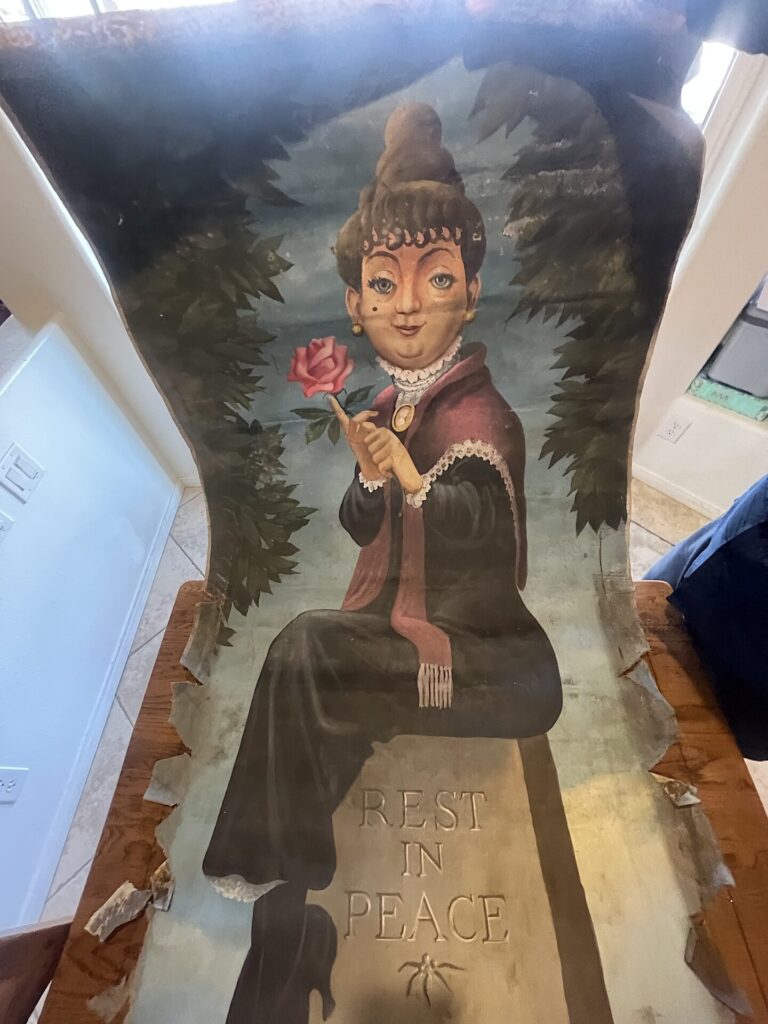
Fished out of the trash thinking that it was a total loss, it was brought back, treasured and valuable!!! (From Disney’s Haunted House in Anaheim)
Tips For Making An Insurance Claim for Art and Antiques, Collectibles and Memorabilia
This article will help you discover a few valuable tips for making a successful insurance claim for damaged artwork, antiques, memorabilia, heirlooms and collectibles etc. which are exposed to smoke. I am a professional fine art insurance claims expert and I broker the expert services needed by the insurance companies to settle their claims. I’m going to share with you some insights from working on a couple of cases that will give you the inside info.
I work with art conservators all the time who work on smoke damaged items in their art conservation labs (Click Here for a quick video tour). I am often hired by insurance companies which deal with fine art claims. My job is to assess smoke damage to heirlooms, collectibles, antiques, keepsakes and memorabilia etc. when the owners of these articles file a claim. I’ve traveled as far as 1000 miles to look over damage and help settle the claim on smoke damage.
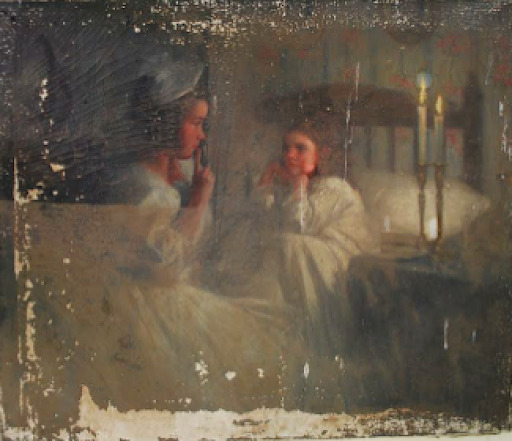
This painting was saved from the flames but practically destroyed by the water! Let’s talk about it before you toss it!!
Below are two smoke damage fine arts policy cases I handled. I hope this throws some light on ways to protect your collectibles and to look ahead at how you can be prepared in order to make appropriate claims if needs be. Those who collect and love their antiques, delicate furnishing, collectibles, family history and heirlooms etc. will for sure benefit from this article.
State Farm Asks: Is Smoke Damage Possible From 40 miles Away?
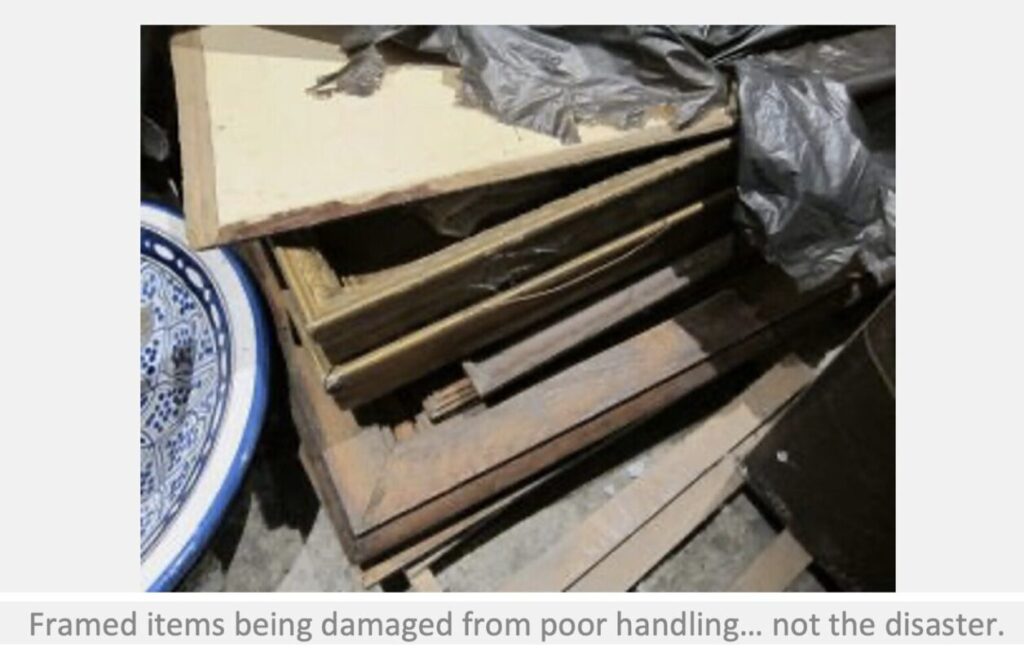
Waiting too long to file a claim will open you up to contamination of the evidence.
A short time ago I was asked to evaluate the fine finishes (gilding) and the artwork in an important estate in Los Angeles which claimed over $1/2 million damage. The prestigious property had a policy’s; part with State Farm, part with Chartis (previously known as Chubb Insurance Company) and filed a claim for smoke damage to their frames, sculptures, fine arts, murals and gilt surfaces etc. due to the smoke from a fire that took place 40 miles away and 2 years previously! The insurance companies assigned me to assess whether the articles were actually damaged by smoke or not.
In this case it was obvious that over the past two years lots of dust particles had settled on these articles as compared to possible smoke deposits from 2 years back thereby contaminating the possible evidence. (one important tip, don’t wait but file the claim while the event is recent for the best considerations and handling of your claim, Another tip: document the irrefutable damage as soon as it happens.. it will be your proof!). With the help of expensive scientific analysis, the amount of dust deposits and smoke could have been estimated separately. But, they asked me to drop the test as it would have cost them more than a $1000. And if many multiples of test sampled had been required the analysis could have been many $1,000s. In any case, I had an art conservator to come in and give me back up for a thorough inspection.
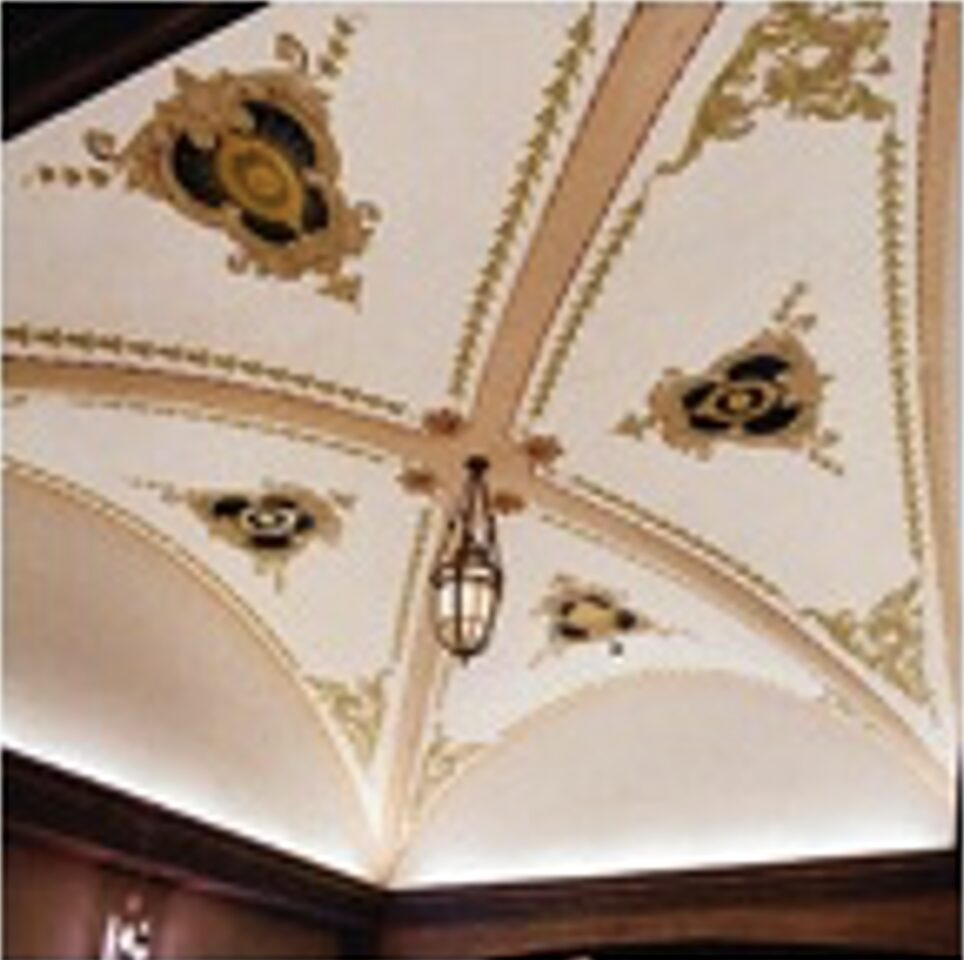
Screenshot
Smoke damage?
In the entry, there were 5 vaulted ceilings similar to this one, except the crown moldings were in gold leaf.
I read the fine art insurance claim documentation very carefully which included 10 pages of detailed descriptions about the different items and finishes which were claimed to have been subjected to smoke deposits and corrosion. As I walked through the house inspecting the items, the claimant gave me the red carpet tour of the entire estate and explained to me the damages which he had noticed. According to him the gilt finishes had suffered a change in color due to smoke but, I didn’t agree with his argument. Besides the gilt items being coated with a protected lacquer, the finish’s surfaces appeared to simply vary in their types of finishes and I did not consider them as alterations.
Perhaps the owner had forgotten the appearances of the various finishes in the house and now was noticing details for the first time with the closer inspections? This kind of confusion is pretty common in claims for damage. This becomes a topic for debate between the claimant and the insurance company.
In the end, I was not in favor of the claimant’s point of view. After careful inspection of all articles and their finishes I completed my report stating clearly that there were no alterations in the colors and finishes. Therefore Chubb Insurance Company didn’t pay out on this fine arts damage claim.
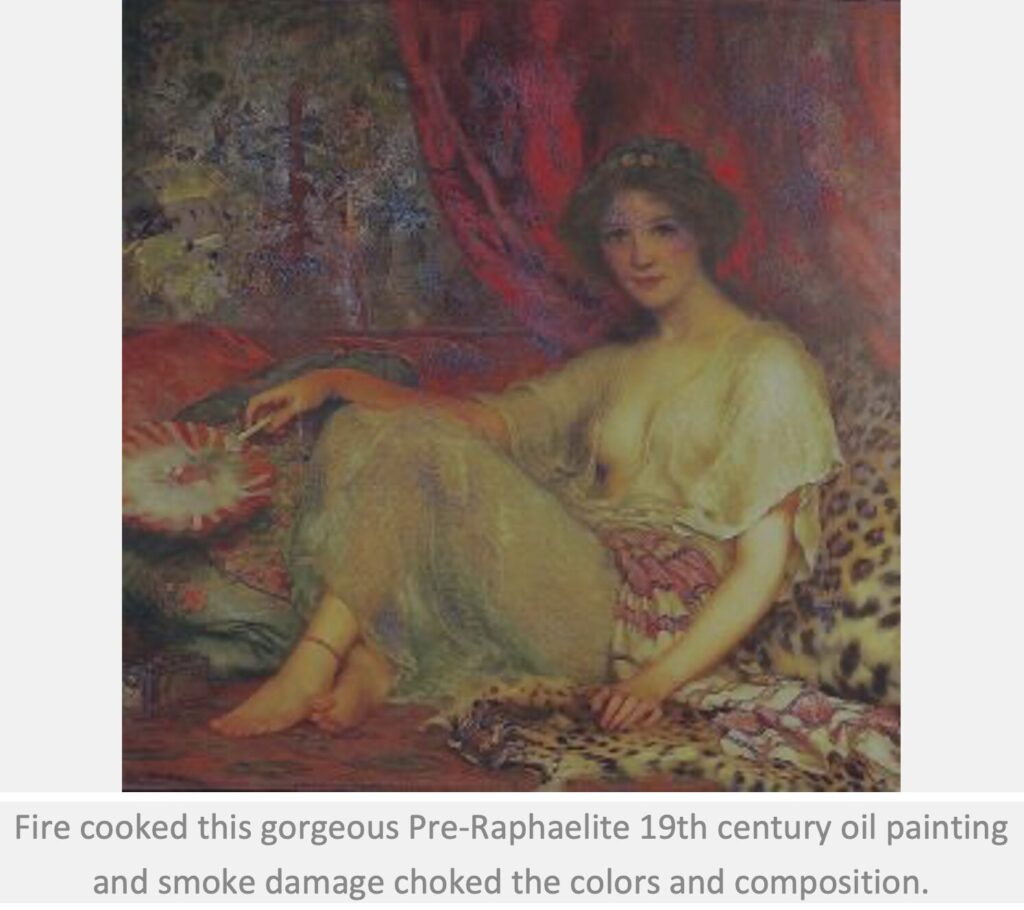
In another case, however, Chubb faced another claim worth $500K for a painting damaged in storage. After checking the painting thoroughly I recommended Chubb not allow the claim. But still, the company immediately paid the claim to the claimant. Later I realized that the claimant was a major customer to the company and had plenty of collections, properties, toys and boats etc. insured with them. This incident showed that as per their business interests and not merely on their principles, the insurance companies may disallow or settle the claims. (Tip: Having all your insurance needs handled by the same company may give you leverage when it comes to a settlement)
However, such business decisions are not really my problem. My duty is to report back on the actual conditions of the claims accurately and I do this as an advocate of the artwork. I do not alter my opinion based on who is paying me (the insurance company, or the claimant). This gives me credibility as an expert witness on art related matters and when I have to appear as a legal testimony in court.
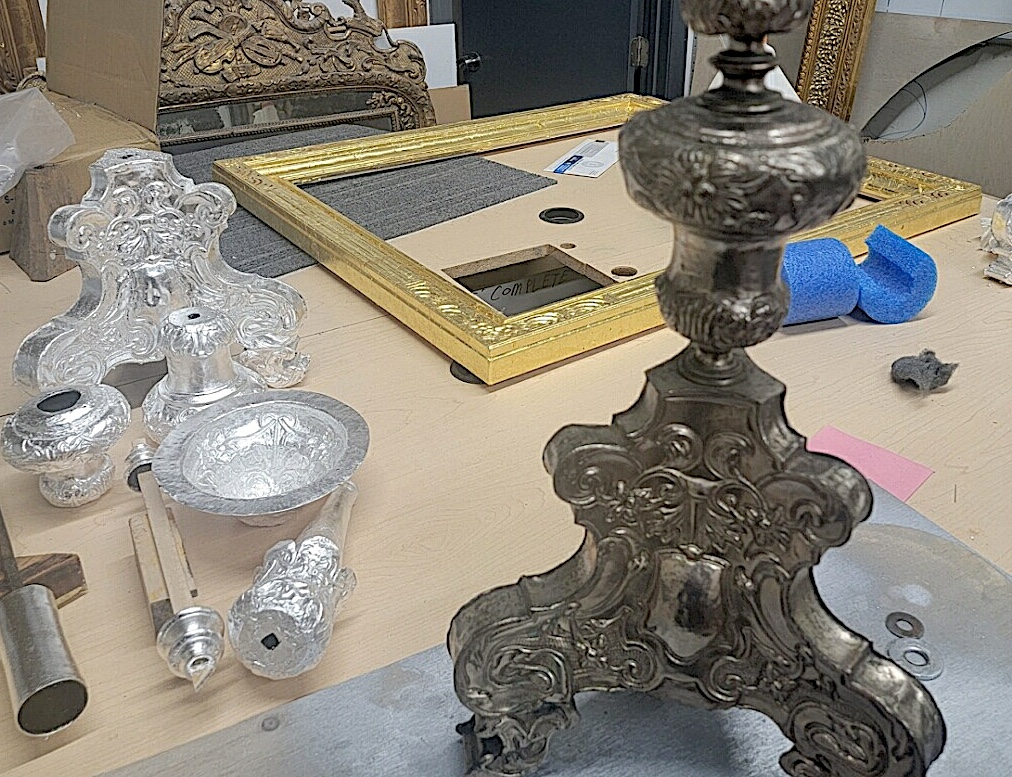
Silver that was smoked.
Next Example: Allstate Insurance Company
In this incident of smoke damage, the insurance company did everything possible, voluntarily to help their customer with this claim.
As you may be aware, huge fast moving fires can be very fickle and sometimes consume one house while leaving the house next to it. Such was the case with this family’s house. While the fire burned everything all around the house, it “only” filled the house with heavy smoke.
In this case, the Allstate Insurance set an example for all the other insurance companies as to how they should act with the intention of protecting the client’s interests. As the victims were under mental stress and trauma, these policy holders were unable to file the smoke damage claim for their collectibles, family history items and keepsakes, heirlooms, etc. Even after a whole year passed they had not yet filed a claim. Still, the insurance company kept all options open and was waiting for them to address the issues of family keepsakes.
As an expert in the preservation and saving of treasured family items from smoke damage I brought in Scott M. Haskins, author of “How To Save Your Stuff From A Disaster” and owner of Fine Art Conservation Laboratories (FACL, Inc.). His company acted as the coordinator between the claimants and the insurance company. They gave all the possible help to the affected people in preparing their claims. They helped the client prepare a complete list of keepsakes and collectibles together with photographs and helped them to complete the claim making procedure. They also recommended special treatments for articles such as drawings, sculpture, photo albums, rare books and artworks etc. which must never be cleaned with industrial products. They made a list of around 550 various items including photos, paintings, antiques, books, furniture and statues etc. All these objects were damaged by smoke.
FACL Inc. performed the evaluation and gave the report and assessment to help file the claim. Once the formalities were completed between the insured and the insurance company, they helped the claimants in the conservation of articles by getting rid of the smoke smell & deposits.
An art conservator is not an appraiser. In fact, it’s usually considered a conflict of interest for a restorer to give you an opinion on value. So, that will be a separate task, that of finding an appraiser that will give you the correct value.
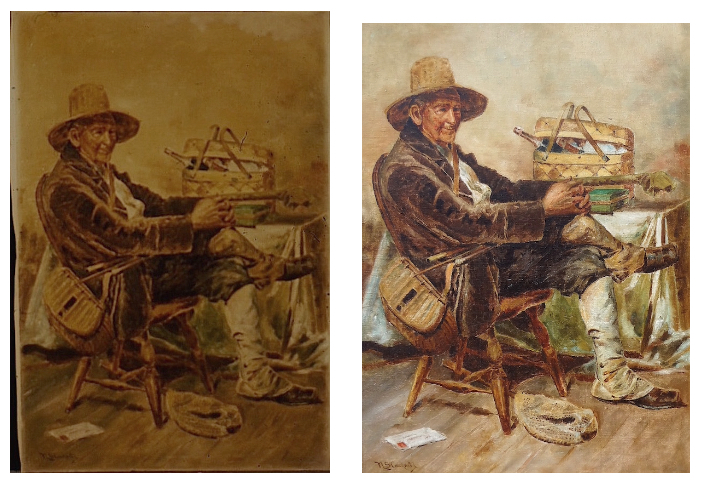
Wiped and said to be cleaned by another restorer, the 1st attempt to properly restore this valuable family portrait was poorly done. The difference from actually removing the damage is extreme. I had to contract FACL to do the follow up cleaning properly.
To conclude, here are 5 important tips to file a fine art policy claim of smoke damages:
- All the important documentation of the collectible’s records must be copied and kept in another location away from the collection. Online storage is a good option but remember to inquire about personal information security. To make this point, here is the short video of an interview with a woman that suffered a house fire: http://www.youtube.com/watch?v=7lCx-xg4BMY
- Since items made of metal corrodes very quickly by ash and smoke, immediate action must be taken.
- Insurance agents should be informed right away and with the proper documentation.
- Always hire a true professional when it comes to cleaning the artworks and antiques etc. Don’t allow general house cleaners and disaster response clean up companies to clean them.
- To avoid errors while filing the claim, ask the experts for help in order to determine the degree of damages.
Give Scott Haskins a call for a free chat: 805 564 3438 office, 805 570 4140 mobile
Gena Dillon, Disaster Response Coordinator 805 564 3438
For art appraisal questions? Call Richard Holgate 805 895 5121 mobile
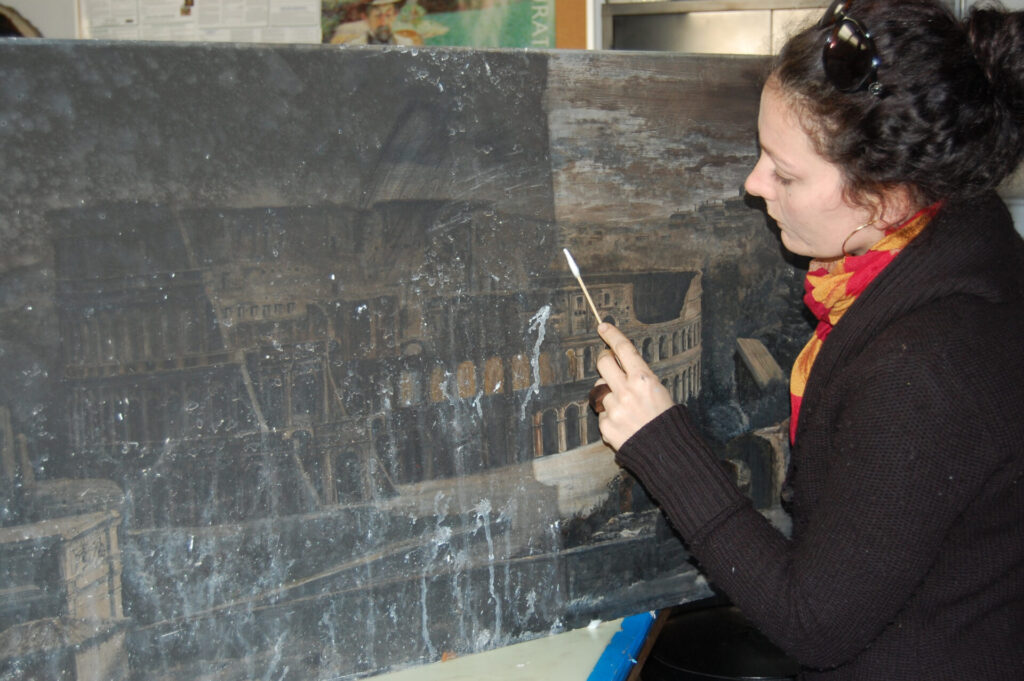
Even though the heirloom painting was a throw away because of the extensive smoke damage, according to the owner, he was elated that the cleaning brought it back to its original condition.
If this article answered questions, provided guidance and educated, please click on the “LIKE” – THUMBS UP at the top of the page. Also, please leave a comment!

“Your blog post has been syndicated at ExpertClick.com”
Its a bit of a coup to get an article syndicated, and its certainly prestigious, as additional “proof” that the info and the author are considered far and wide authoritative and an expert in the field. This article was syndicated for USA national redistribution. What does it mean that this article is “ syndicated”? Enjoy and trust our content!!
This article has been syndicated at https://www.expertclick.com/NRWire/Releasedetails.aspx?id=308641
What does it mean to be syndicated? See end of article.
What does it mean that this article is “ syndicated”?
When something is published, usually by a news source, and is made available through different venues for redistribution then it is said to be syndicated. Publications that are syndicated are usually considered of value as being from an expert, educational, new worthy or valuable for wide popular interest. See syndication page at the renowned publicity site: https://www.expertclick.com/NRWire/Releasedetails.aspx?id=308641
This website’s syndication included:
1) Included in the ExpertClick Press Room as a ‘press release.’ (different than a ‘news release’)
2) Included in the ‘Speaker Bureau Platform Page.’
3) Shown on the front page of ExpertClick, in rotation with other most recent posts.
4) Shown in the ‘News Release Results page.’
5) Included on optimized for searches on all my topics of expertise.
6) Shown via RSS linked from the Press Room. (A specific way news is actively distributed within the industry)
7) Shown in the full RSS feed from ExpertCick. (Another, different specific way news is actively distributed within the industry)
8) Syndicated to LexisNexis.com As of 2006, the company had the world’s largest electronic database for legal and public-records related information, distributor of academic content and expert opinion.
